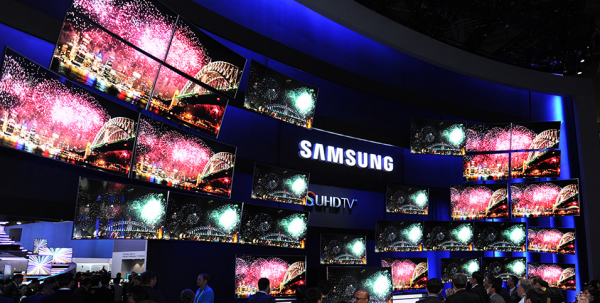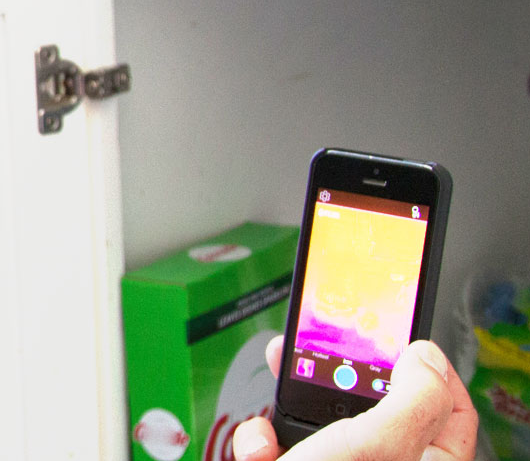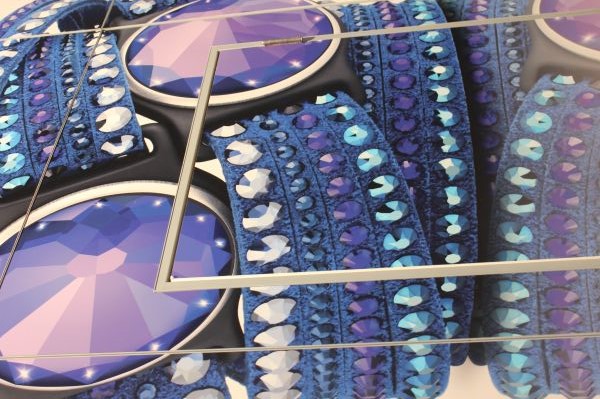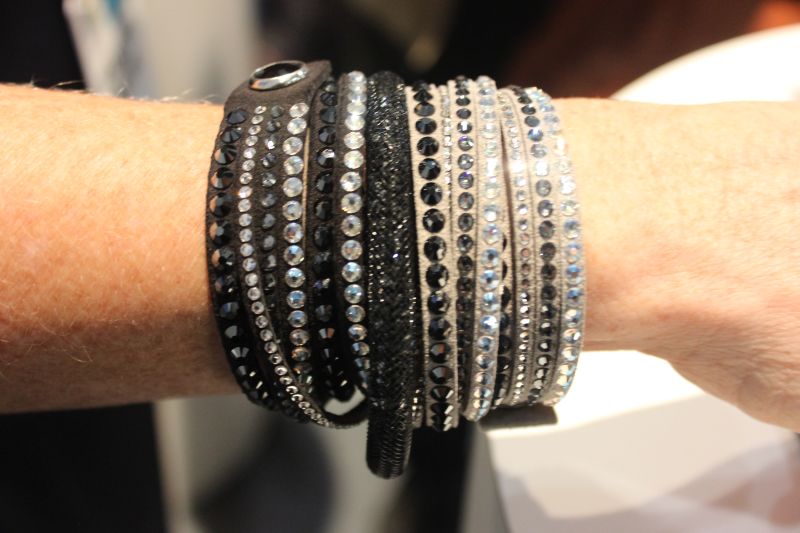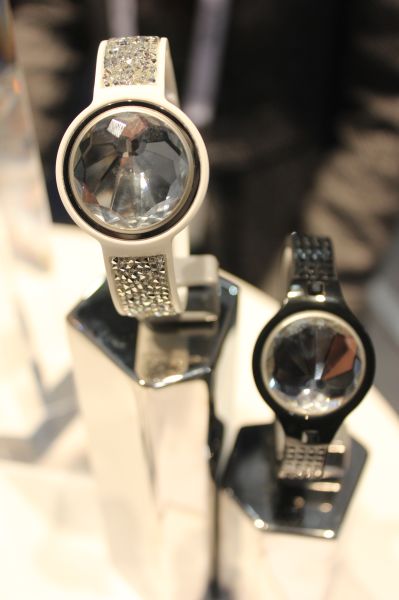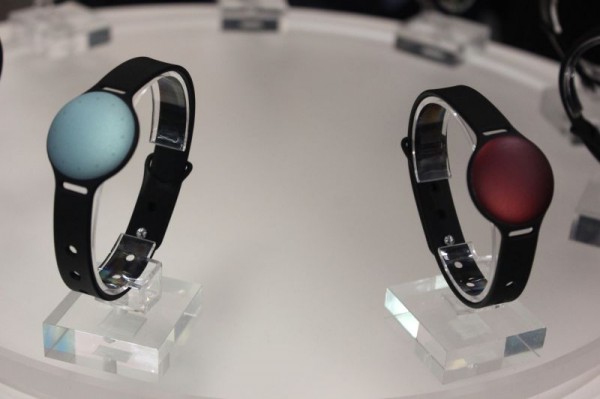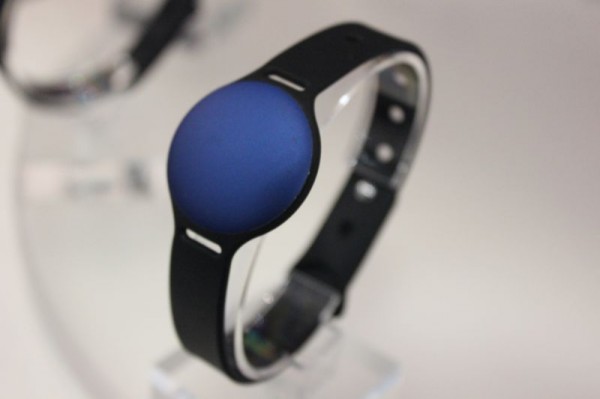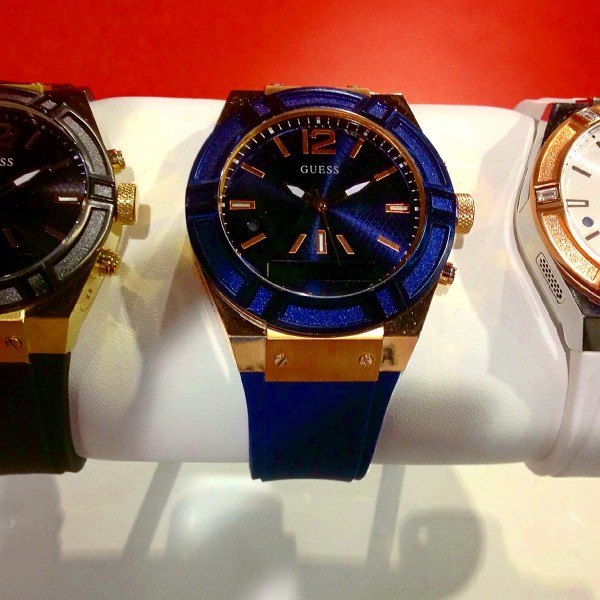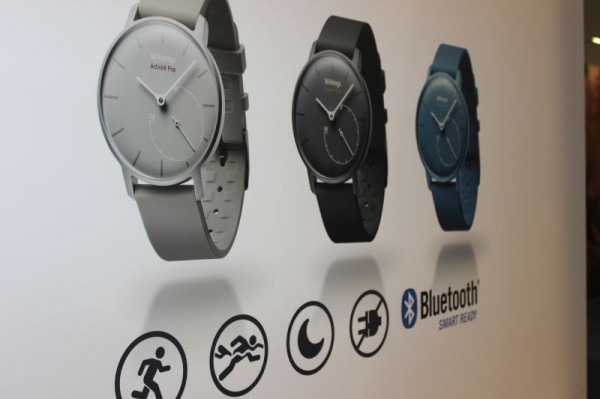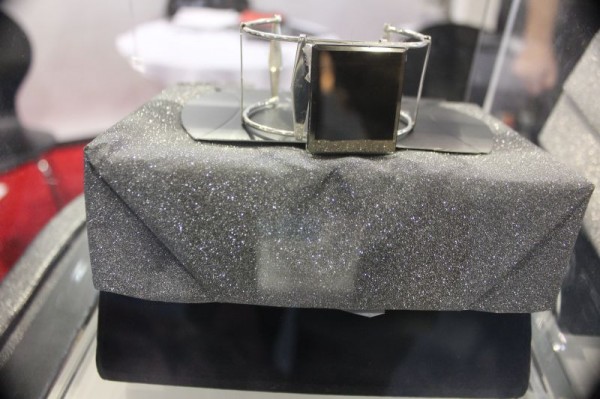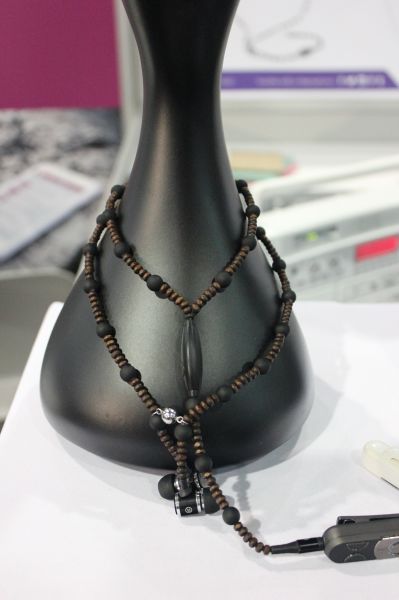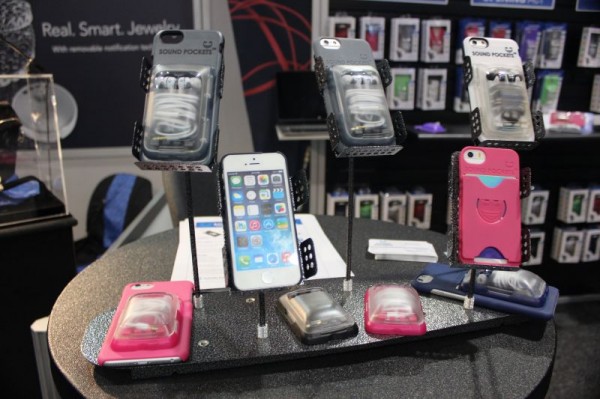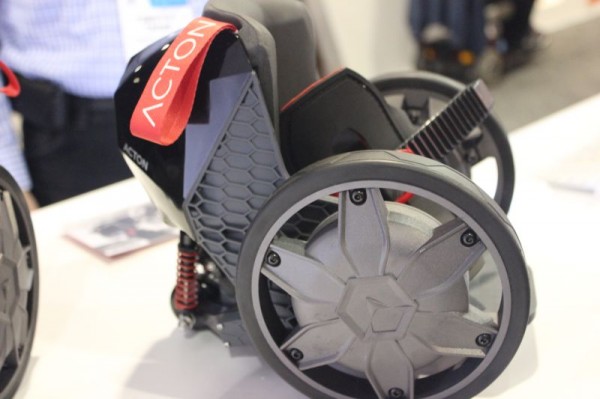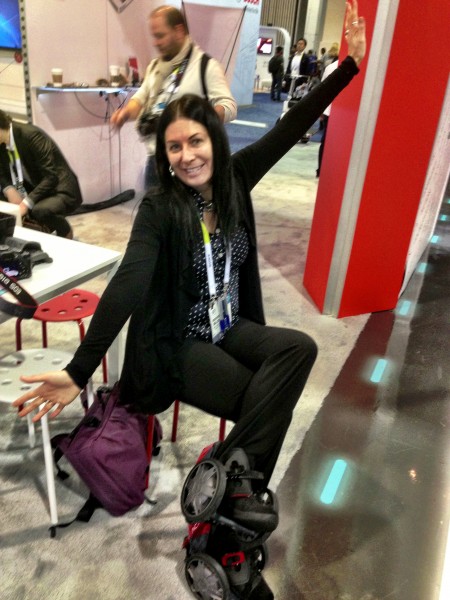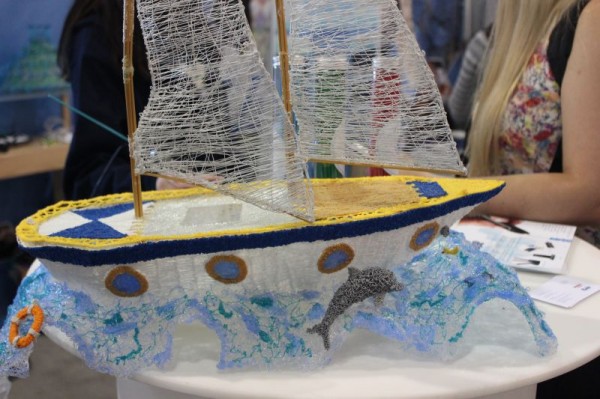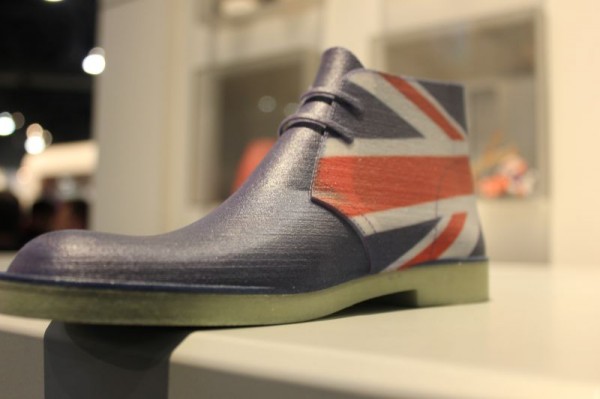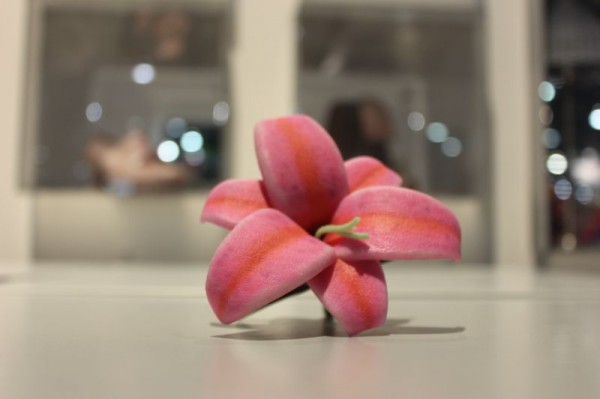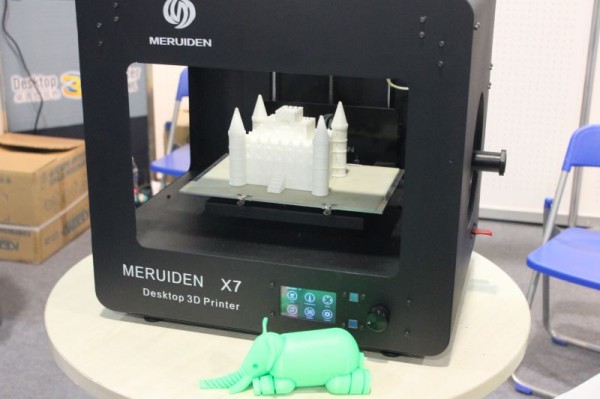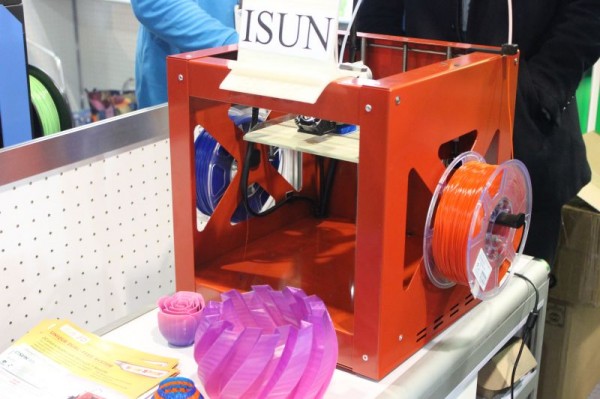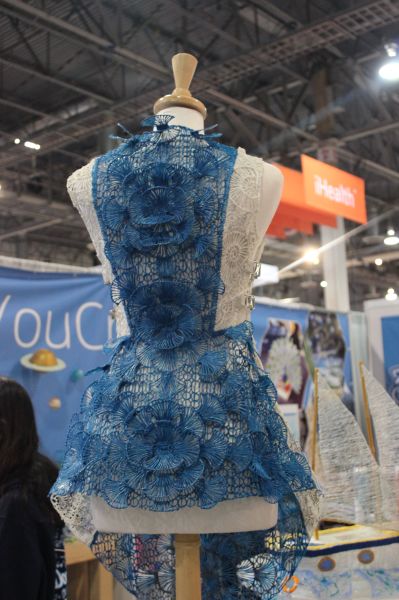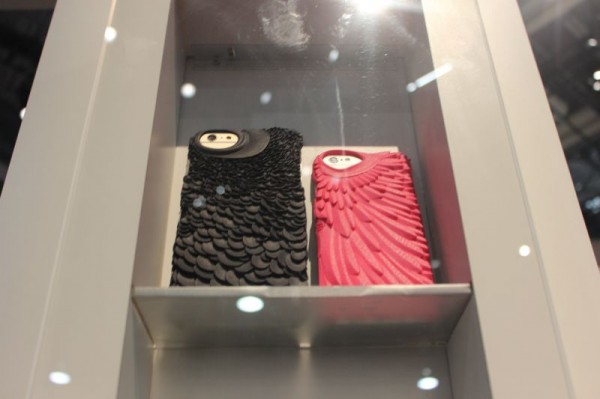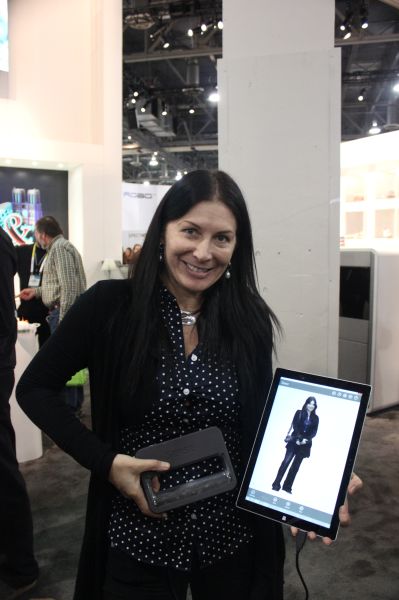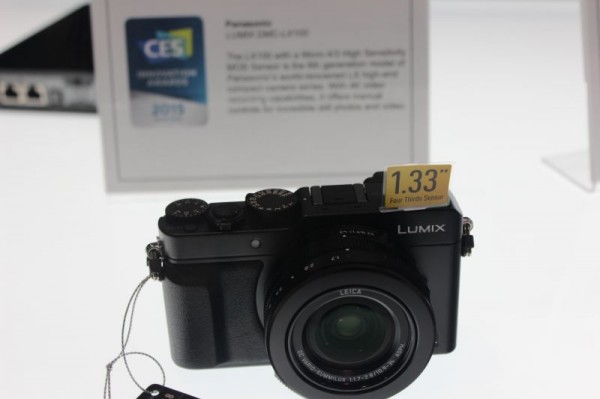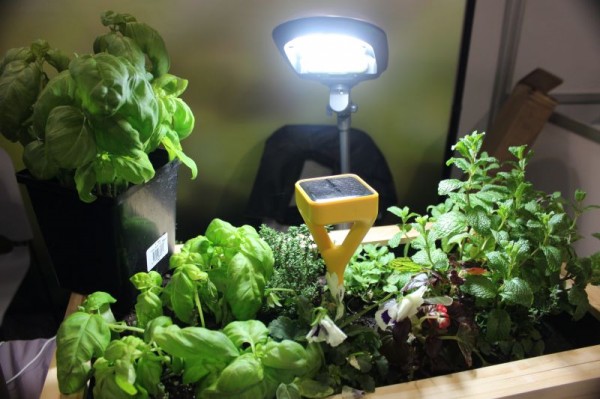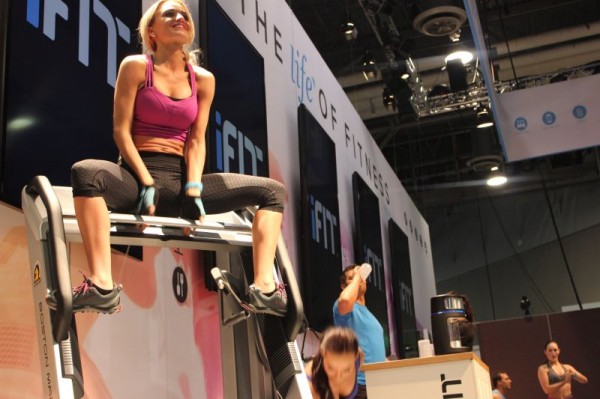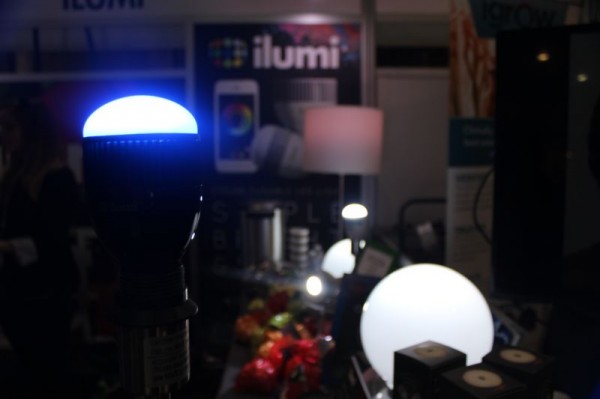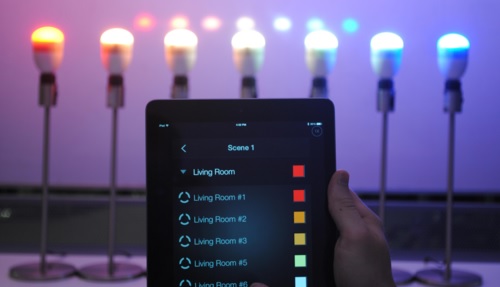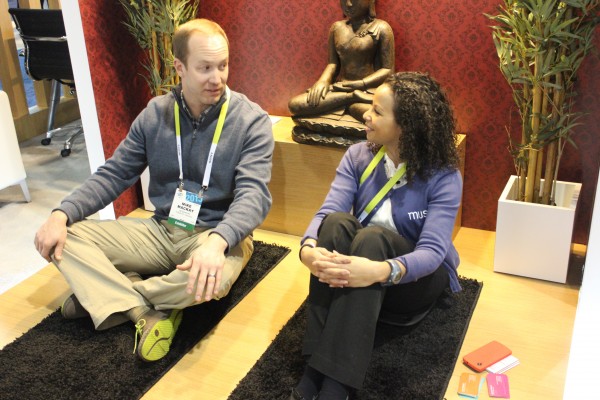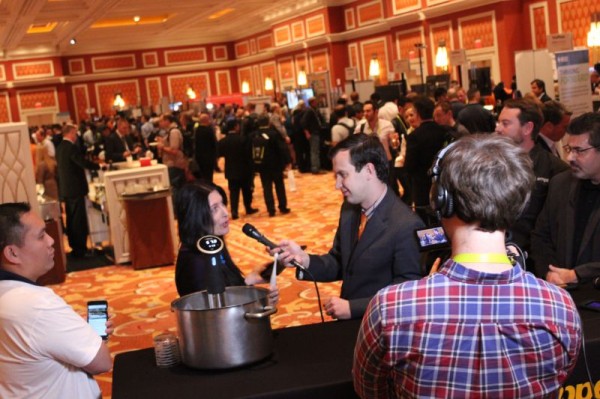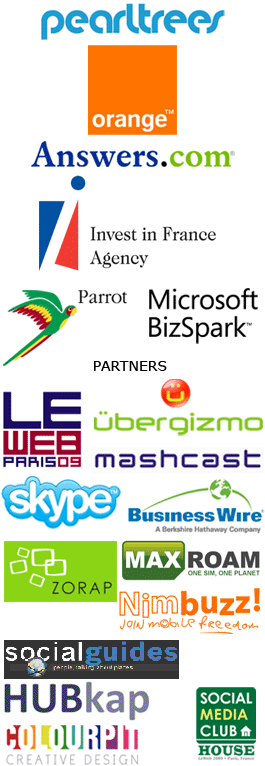Archive for 'France'
Denting The Future With Passionate Geeks in Sun Valley Idaho
When you hear the word DENT, you might have a visual of a dental brand or maybe an auto repair company, but your mind might not automatically jump to a conference in the middle of the Idaho mountains whose goal is to shake things up across industries with technology.
Now in its second year, Steve Broback and Jason Preston are the visionaries behind this event, which aims to explore the magic and science of visionary leadership and groundbreaking success.
While so many events and conferences focus on one main track or trending idea, i.e, mobile apps, enterprise software, wearables or connected devices, DENT the Future has focused on creating an “experience” for its attendees, all centered around entrepreneurship, leadership and having “fun.”
Sessions and discussions ranged from mobile development, gaming, delegation and goal setting to the art of design, crowdfunding, wearable tech, data visualization and decoding the language of glamour.
We delved into education and IPs and then onto the importance of creating support networks when building a startup, before embarking on a dialogue with Richard Douglas “Dick” Fosbury, who is one of the most influential athletes in the history of track and field.
We also heard from Chris Anderson of the CSI Centennial Observatory and the Falukner Planitarium, who shared how the current best understanding of gravity — based on Einstein’s relativity — suggests that everything creates its own dent in the universe, however small, how this connects everyone to everything, and how the relativity of simultaneity means that we all inhabit our own unique universes.
With crowdfunding on the rise as an alternate to traditional angel and seed investment, it was no surprise to see IndieGoGo Founder & Chief Development Officer Danae Ringelmann on the stage in an inspiring fireside chat with Jeremiah Owyang.
We explored the benefits of crowdfunding and debated if the crowd is actually wiser than vetted professionals from established companies.
Says Danae Ringelmann of the value add for VCs, “we derisk the investment process, allowing them to step away from the vetting process so they can focus more on the amplification. We’re creating pre-markets from the community up and because we’re open, we don’t infiltrate the results.”
She asserts that by being open, IndieGoGo can inherently be a true market testing platform. “If you’re unsuccessful at raising money, you don’t have an audience that cares. If the market doesn’t care, you can either hone your product or go back to the table and focus on features or projects that truly matter to people.”
The notion is that as a true market testing platform, they democratize results, rather than corrupt them. This crowd-based approach is opposite to the corporation approach says Jeremiah, so “what can big corporations learn from a crowdfunding model like IndieGoGo?”
She says that large companies and brands are now using IndieGoGo as a market testing platform. For example, Phillips sponsored an effort where various projects went up to get feedback from the market so they could learn about what to incorporate into their products. Companies like Honda and Whole Foods are also using crowdfunding as a customer engagement and cause marketing platform. In essence, the crowd gets what they need from each other.
My favorite learned “stat”? Apparently, 47% of all successful ventures on IndieGoGo are run by women.
While Jeremiah may have shone in his bright red sneakers, Robert Scoble also did his interview with Fosbury in bright red. They weren’t the only ones walking around shining like Rudolph’s nose since Scott Jordan of ScotteVest gave away newer models of his fabulous jackets and most people chose “red.” In other words, there was a whole lotta red happening at DENT 2014.
Virginia Postrel took us in the opposite direction, showing us how to decode glamour and where it shows up in places you’d least expect it, like the Marines. She asserts that people have a narrow idea of fashion and glamour and their images are largely made up of make up and old fashioned holiday movies.
“Glamour draws people to technology,” she says. There are clearly a lot of glamorous images and ideas which shape what technology gets built and also how we use it. It’s never been easier to work at the beach with your laptop and mobile phone. Even language we use in technology has a quality of glamour to it.
A few observations: rather than think about what glamour is, think about what is glamorous. I loved this distinction: glamor allows you to build your own Reality-Distortion Field.
She nailed it here: Glamour is a nonverbal persuasion, a projection of longing. There’s an audience and an object and in the interaction between that interaction, a distinctive emotion is evoked.
A lot of what glamour does is make us buy things; it focuses us on careers we choose, it makes us show up at certain places and wear certain things because of what the association means and buy things to look like celebrities we aspire to be.
From technology to Hollywood, we then dove into politics, focusing on Obama who exuded glamour by creating mystery. He was relatively unknown and people projected their hopes and dreams for the world. We saw what happens when a brand becomes a movement through all the people who supported him.
It’s so true: glamour is in the audience. Whether it’s funny or not, it’s not how hard you’re trying; the success is whether the audience laughs or bites. We learned that glamour is an illusion that tells the truth about desire — it is known to be false but is felt to be true. Glamour is a spell that makes us feel more magical than things really are. It contains the illusion of magic. Of escape. The illusion is the grace. Ahhh yes…Spot on Virginia!!
This is the quirkiness and magic of DENT. Just when you think you’re going to get another speaker from the world of all things tech, an astronomer, an author of glamour or a designer and illustrator comes onto the stage.
Chief Freak and founder of Freak’n Genius Kyle Kesterson is another great example of the speaker mashup so well curated by Jason and Steve.
I loved Kyle’s human-ness. Rather than focus on his successes, he shared his life “story”, which dragged him through homelessness, numerous drop outs and years of suffering from severe depression. The discovery of artistic expression and creativity changed everything leading him through a series of wins at Giant Thinkwell, as Seattle 2.0’s “Best Startup Designer”, a Geekwire “Entrepreneur of the Year” nominee, a toy developer, photographer and beatboxer.
He talked about consumption, a word I love because of the complexity of the word and all that it represents. People either associate it with negative actions or positive ones depending on your orientation of the world.
Kyle asserts that there are two things that can come from consumption: Inspiration and Education. I think there are probably more, but inspiration and education are great places to start.
He reminded people that along your journey, it won’t always be easy and that critics will suck the wind out of you so fast you won’t know what hit you. Ask yourself: are you sucking the air out of other people’s dreams or are you contributing to making them happen? Great question!
Which person are you most of the time? How do you enable others to create, explore and let others shine?
Along your journey, you will have a story to tell and velocity will come through that communication. But, do you have a compelling story? Having a compelling story that is genuinely authentic is where you will get empathy from time and time again. You need to create more value for your listeners so that you accelerate their story not just your own. Are you inspiring and educating them, taking from them or merely a megahorn? It doesn’t get more human than that…
Then, Noah Illinsky took us on a data visualization journey. Noah suggests that successful visualizations need to have the right:
Purpose – why we are creating this?
Content – what we are showing?
Structure – how we position it?
Formatting – formats, labels, fonts, etc.
The problem Noah asserts is that most people go through the process in the wrong order. It must be in this order because they stem from each other. You need to know what kinds of questions you need to answer and what actions you want to enable before you create a visualization.
Once you identify the answers, you need to think about what data you want to show and what graph (ic) you want to use to share that data. Lots of engineers start at the end rather than trying to identify what the goals are first. Engineers haven’t been trained how to go back upstream to figure out what problem they’re trying to solve. He suggests that as a team, you need to define the upstream sooner before the coding and creation begins.
Bottom line: nobody cares about your brand, they only care about whether you make them feel good. People don’t have time. The take away here was: serve your customers – purpose is everything and it dictates the deliverable. It always comes back to purpose!!
Google Comparison CEO Dan Shapiro lives and breathes the comparison shopping space.
Rather than focus on his “stuff,” he discussed what does it mean to be a CEO and what they do, which is basically Hire, Inspire and Fire. The job of the CEO is to hire effectively so you can delegate effectively and the team is the single most important part of the CEO’s role.
Vision can come from a bunch of different places but it’s the CEO’s connection to that vision that drives the company. The CEO must be the keeper of the strategy, which is something that he asserts, can never be delegated. Dan suggests that in fact, there are six things you can’t delegate as a CEO:
Strategy – the CEO needs to drive that from the ground up.
The Team – getting the right team in place is one of the most important things a CEO does.
The Vision – it’s critical that the vision comes from the leader.
Financing – investors want to see you in action. How you negotiate your deal with them is how you will work other deals and they want to see that. Investors also want to build a relationship and a friendship with the CEO.
Investor Relations – investors want to hear from the CEO.
Company Culture – sometimes it’s like a fungus, sometimes it’s like a ferry ring. No one knows what a company culture is about or how it evolves, but whatever the culture is comes from the leader.
From astronomy, data visualization, illustration, glamour and leadership, we moved to violence with Dr. Gary Slutkin. Slutkin is a physician and epidemiologist, an innovator in violence reduction, and the founder of CureViolence, a scientifically proven, public health approach to violence reduction which uses disease control and behavior change methods.
Through their work, they’ve statistically demonstrated reducing shootings and killings by 41% to 73% by three extensive independently funded and independently performed studies.
Gary has a fascinating story and history — he was recruited by the World Health Organization where he worked in over 20 countries, including leading the efforts – using behavior change methods – to reverse the AIDS epidemic in Uganda. The analogy here is that Slutkin sees violence as an infectious process, and credits his WHO training and experiences in multiple countries to informing his understanding and approach to violence and behavior change.
I was inspired by other on and off-stage discussions including Andy Grignon, Mark Anderson, Kathleen Warner, and The North Face founder Hap Klopp.
Speaking of inspiration, a great conference isn’t complete without art and music and this year’s musicians blew me away.
Roem Baur whose roots are in opera, has played thousands of shows in a career that spans 4 continents. He nailed it on guitar and with vocals alongside Tae Phoenix, whose 3 octave range voice made me cry on two occasions.
The other inspiration came from the humor and intellectual wit from the team at Buick. Yes, Buick. I left DENT with a much more hip view of the brand than when I arrived, so much so that I’m now dying to try out a few Buick vehicles as well as experience a much more cooly polished culture than I ever imagined. And, truth be told, their marketing and social team is smart, genuine and fun, a rare combination. Thanks for the insights Nick Richards and Phil Colley.
Of course we all know that most of the learning and engagement at an event comes from the hallway chats, the after parties, the breaks, and the other activities that ‘surround’ an event. What makes DENT such a standout is not just the unique and eclectic curation by Steve and Jason, but the interesting things to do in between.
Want some examples? How’s this for off-the-charts?
On the two days leading up the conference, activites included an at-dawn trek where you learned about the world of wolves led by Oliver Starr, a photography walk led by the ever so endearing Kris Krug, a scavenger hunt led by Buick, a private gathering at ScotteVest CEO Scott Jordan’s house where great wine was poured, a rustic mountain lodge visit where we drank more great wine by a blazing fire, skiing at Sun Valley Resort and an evening of hosted dinners where we were thrown together with interesting personalities from all walks of life.
I personally attended the SouthWest Airlines dinner, which was a perfect match given that I run an online luxury travel magazine, only to be led afterwards by local and not so local entrepreneurs to three more stops in downtown Sun Valley where we experienced more fabulous food and tons of warm Idaho hospitality. SouthWest Airlines also sponsored a nerd bird flight from Oakland to Boise where their social media guru Adam Rucker not only applauded the geeks from the front of the plane but gave away surprise $100 off coupons to everyone on the plane, not just DENT attendees. All I can say is “classy move!”
It all came together graciously through a combination of efforts and hard work — a huge thanks to:
Steve Broback who is personally responsible for dragging me to Idaho
Buzz Bruggeman and Doug Rowan for pestering me to attend for the last year and a half
Maryam Scoble for making the logistics seamless and easy and for making me smile
Greg Randolph of Sun Valley Tourism for making sure I knew where to go, what to do and why
Therese Magner of Sun Valley Resorts who went well above and beyond the call of duty to make sure I left the area with one thing on my mind….returning
Shannon Allen of Knob Hill Inn for her gracious generosity
Beryl Barnes of Zenergy for providing a place to relax and reground myself
Wendy Muir at Globus for amazing sake and an exquisite culinary treat
And, hats off to Jack Sibbach and Therese Magner for getting me on the mountain more than once and to Therese, Ellen, Cecile and Alex for supplying me with jackets, socks, hats, gloves, glasses and gear to make sure I didn’t freeze my ass off on the top.
Be sure to check out my upcoming blog posts on Sun Valley over on We Blog the World where I’ll be covering two properties, a spa, two restaurants, the mountain and the culture.
While we’re getting personal, it’s time to meet some fellow DENTERS…
Did I mention how much fun we had?
We even hung upside down somewhere along the way. Well, a few of us did anyway!
And as always, Robert Scoble and Shel Israel signed books.
Of course, Robert reinforced that geeky and ever so adorable brand of his….oooops, that’s his finger. Or is it actually the brand, or is it his….you get the idea.
Below are chief DENTERS Jason Preston and Steve Broback who deserve an applause for bringing passionate inventors and thinkers to the American wild west for a whole lotta reflection, learning and fun!
Fun New Travel Apps Tout Their Horns at Web Summit
At the fourth annual Web Summit event in Dublin from November 4-6, 2014, 22,000 people from around the world came to see new gadgets, get cool demos and hear the latest scoop on where technology is heading. Since we love travel, we decided to spend a little time learning about what some of the new travel start-ups were up to on the show floor.
While we mostly cover news and destinations for the luxury traveler, we threw in several apps into the mix that would be useful for hotels, airlines, property and guest house owners and even boat owners.
What I found fascinating was just how diverse the nationalities were across the board — there are some creative apps coming out of Portugal, Israel, Germany, Finland, Greece, the states, France, England, Ireland, Italy, Finland, Russia, Brazil, Austria, Holland, Belgium, Australia and even Monaco and Malta, among countless others. I put together a curation of some of the apps I came across during my scouting exercise across three days at this massive technology event.
Yonderbound is another B2B solution. Based in of all places Monaco, the female founder team (uncanny fact but they’re both named Barbara), is trying to help travelers get a kick back for sharing their knowledge and travel experiences. Millions of people share their travel knowledge on popular sites for free and Yonderbound thinks you should be rewarded for it — up to 70% of the net revenue you produce.
TripFlr is a new travel app from London-based co-founder Jerome Lapaire and team. The pitch? What else but “travel with flair.” Remembering the name of a bar or a shop is often a pain. City by city, you can now store your favorite spots and all the places you have yet to discover in your private Triplogs!
Georama is a real-time vicarious travel platform. They help people experience the world anytime, anywhere. Georama’s technology allows viewers to explore a destination in real-time by interacting with a guide who is live streaming their perspective.
They’re targeting tourism organizations, hotels, airlines and more to help them inspire and engage with prospective travelers around the world.
The Find Out App helps restaurants, nightclubs and bars interact with users on their key information to improve the experience they have on the ground. Based in Paris, they only started out about a month ago so are trying to add new venues as quickly as they can, and will expand to other cities as things progress. Guestvista is aimed at social travelers. Travelers can learn about useful hints and tips from others. The company is based in Ireland.
InLoco gives you an opportunity to travel with locals. This Brazilian-based company has been loading their content from Brazil and will be adding European users soon. The idea is to discover non-tourist sites, meet new people and find more interesting alternatives by traveling with a local resident.
Plan Chat lets you create a plan for anything with content from everywhere in a familiar centric manner. Hotel Booking say they are the best hotel search engine. It looks a bit like an Expedia but for hotel booking only.
Guest 2gether out of Austria, is a social network for hotels. They create a new vacation experience for each customer.
When you’re at your hotel, you can meet up with other people staying at the same hotel and meet up to do activities together or dine together based on common interests.
BookBedder say that they can make hotel booking even better. I chatted with Swiss-based co-founder Yannick Blondeau at the event. BookBedder is a collaborative hotel booking website where hotels and guests join forces to get reduced costs and better deals on hotels.
Quicket is a mobile travel service that combines existing flights, hotels, cars, fees and air services for independent travelers.
BookGreener gives travelers lists of authoritatively rated eco-friendly hotels from around the world. Based out of Indonesia, the ever so eco-conscious founder Alexandre Tsuk wants to change the way people think about hotels and make travelers more conscious about where they stay. What else is cool is that every time a traveler books a hotel, BookGreener plants a tree.
Social Airways has a great idea. The Cyprus-based founder and CEO Stylianos Lambrou wants to help flyers get more value from others on their flight, every time they fly.
It’s a social flights platform that connects people who are on the same flight, so they can share rides, information and anything else that might be useful. I love this and hope it sticks.
Conichi say that they plan to revolutionize the interaction between hotels & restaurants and their guests. Through the Conichi App, guests are automatically recognized and their visits are tracked in order to provide optimal customer service.
In addition to being able to greet guests personally, their preferences are stored so hotels and restaurants can grant them personalized recommendations and provide additional benefits that best suit their interests and preferences.
Big-data, personalization and smart-analytics are combined to optimize the guest experience and explore new levels of guest loyalty.
Family Vacation is a cool app based in Bucharest and New York that helps families book travel. Think of it more like a marketplace where families can find, customize and book personalized vacations provided by locals from around the world.
Inn Style is a web based alternative to irksome spreadsheets and dusty diaries for all kinds of accommodations owners — they tout, that it will be the easiest way for you or your clients to start taking online bookings.
Hero & Creatives is run by a woman CEO based out of Portugal. I love this idea – essentially they match you up with guide photographers in your destination of choice. How cool to explore the world with a local photographer who can show you an entirely different perspective on a country or city.
Direct Hoteling is a database of hotels and other businesses providing accommodations so you can find the best offer out there.
Travel Myth is another hotel recommendation engine, but one which is based on your interests. Based in Greece, this company’s app could be really useful if it sticks – we need more granular ways to search, discover and book hotels based on our personal likes and dislikes, so I really like the idea.
Gloudio is a fun idea out of the UK. They are combining traditional pre-recorded geo-located audio guides for well visited sites like museums with crowd-based audio content for an enhanced user experience when they’re on the road.
Exploranza out of the Czech Republic hopes to help travelers discover hidden gems. There’s no doubt we need more sites who can curate experiences for travelers in a much more efficient and high quality way but I’m not sure they have quite nailed it yet.
That said, they don’t plan on charging tourists for this curated premium content and they hope the value will get better and better over time. Kymboo.com’s tagline is Tourism 4.0.
Based in Spain, they say they are the first professional booking system for hotels, resorts, cottages and property owners where they can share marketing of their products.
Boatsetter out of Florida, hopes to offer a safe and secure way for boat owners to charter out their vessels to selected clients. Each charter includes state-of-the-art insurance, on-water support provided by BoatUS and US Coast Guard licensed captains available to hire.
Nifty idea but probably pretty niche, at least initially. The idea is obviously that customers will see value-add immediately since they can subsidize the cost of ownership and have a better maintained boat over time.
Roaming Byme is based in France and their team hopes to solve the roaming cell phone issue. They tout themselves as the traveler’s mobile operator, where they hope to solve traveler’s roaming bill shock issues.
YapQ, based in Israel, has created a mobile app that tells you what’s around you. They curate destinations and activities you want to do frequently in a city or town, such as a well known museum. The other beautiful thing about their app for a traveler is that you can use it offline and get the same benefit.
Pimp Your Stay with a team out of Malta, has certainly found a memorable name that is suggestive but also fun. They provide hotels access to detailed guest data (with opt in permission from the guest of course), so the hotels can add extra value to their stay.
Now, with additional personalized information on a guest in advance, hotels can turn a standardized service into a truly personalized stay.
Naymit, out of Germany, makes places findable, allowing you to create a one word address so visitors can find your front door or any other location in an instant. Imagine in the future that you might be able to type your “Naymit” name into your car navigation system and it’ll just work.
Let’s Open Now is based in Holland and is trying to help travelers find what they’re looking for that is open when they need them. Outria out of Belgium, crowdsources events, information from members and social networks and they distribute that information to new members.
Green Hopping is all about green travel. Through their site greenhopping.eu, you can browse, discover and get inspired by green travel ideas and places.
Cyclister, you shouldn’t be surprised to hear, is based out of Copenhagen Denmark, a city of cyclists. You can list your bike on Cyclister, decide on the price you want to rent your bike for and make money off each rental, a bit like the services that allow people to rent out their cars when they’re not in use. This is certainly useful in cities where cycling is a preferred way to get around like Copenhagen for example and I could also see this working in Amsterdam and Montreal.
Next to Me, out of Italy, is creating an accurate submeter indoor navigation system that allows users to locate and access their services within their location.
Audio Trip, out of Poland, is a storytelling app that changes your smart phone into a personal local guide.
Cruise Me allows you to search, discover and connect, all within the cruise world. It’s still a bit hush hush as they haven’t officially launched yet, but apparently the app from this Florida-based startup is slated to go live sometime in January or February 2015.
Share My Taxi, based out of Munich Germany, is a blend of Uber and Lyft. They use professional drivers and there’s also a mobile app that makes traveling with taxis, Uber, Wundercar and others social and green by sharing a ride if its available. This is also more economical for travelers who want to get from A to B safely.
Cityist has started out with Paris-based content since that’s where they’re currently based. They tout themselves as the next Generation Of City Guides. They are a website, offline mobile app & marketplace that turns tourists into local experts.
Local Fixer’s Co-Founder Elliot Costello and team are based in Melbourne Australia. Finally, a fun travel app from the Aussies. It’s a bit like a LinkedIn for the travel sector, where you can include offers in your profile, ranging from offering your pad to rent for the week, or posts of other things you can offer travelers, such as bikes, your car to use, or things you’d like to sell which might be useful to them during their stay.
Deal Broker is a B2B solution that is targeting travel suppliers and help them find great tours and activities for travelers. They customize the content under the tour operators brand/logo that they can then send out to their travel prospects.
DealBroker can also send mobile notifications through social media, text or email. Deal Broker specializes in relevant offers around a specific destination, such as tours and activity offers. They are leveraging the trend that tour operators and activity suppliers want to cooperate and need easier ways to do so. It would be a great multi-touch solution for example, for rental car companies or airlines.
Tziip is based out of Finland and their pitch is a bit like like Lyft but more social. In other words – get a ride and/or share a ride.
Group Booked from Ireland, touts themselves as the AirBNB for groups, but for more than just accommodations. Another value-add they say is that while they book for groups, they’ll take individual payments, making it more flexible for groups of people to book.
Hudway is a mobile app that helps drivers follow directions in fog, snow, rain and at night via road windshield projections.
Tour Plus, based out of Malaysia helps you plan, enjoy and share your trip by creating an automatic itinerary for you. In other words, you put the places you want to see into their app and they’ll map out the best way to do it for you. You can also share that itinerary with others.
Travel Appeal from Italy, allows hotels to control, manage and improve their reputation.
BELOW SHOTS: On the Show Floor at Web Summit 2014 in Dublin
Photos of apps from vendor websites, 1st Photo taken from Travelblat and photos from Web Summit Show Floor from Renee Blodgett.
GlazedCon & Wearable World Expo Come to London This Fall
I’ve attended a few GlazedCon events now and find them to be incredibly useful from both a content and networking perspective. They are specifically focused on an area that is exploding and isn’t going to slow down anytime soon: Wearables.
We’re proud to be a media partner again and this time, GlazedCon is expanding to London on October 22, 2014, where they’ll gather together Wearable and IoT executives, along with other top tech thought-leaders to debate the real business opportunities for the hottest emerging tech ecosystem.
The event is instrumental for key executives, startups, media, mobile warriers and investors. In conjunction with GlazedCon London, they will be holding the first annual Wearable World Expo where over 50 of the hottest Wearable Tech companies will showcase products so cool you’ll actually want to leave with them….or at least let the world know about them!
We have a special 30% discount code for those interested in attending below:
Discount Code: 30% off tickets glazed_weblogtheworld
Eventbrite: www.glazedlondon2014.eventbrite.com
Next Generation Power Summit Kicks off on March 5
I recently agreed to participate in an online video series on social media in business called Next Generation Power Summit, produced and organized by Australian entrepreneur Rosemary Burnett.
The series will kick off March 5, 2014 and run through March 18 and the schedule of social media gurus and expert interviews are listed below.
The video interview series aims to help businesses with their online and digital strategy through advice and insights from a host of folks living it and breathing it every day. Objectives of the series are to:
Get clear about your core message and brand
Build a following on social media
Attract and connect with your ideal client in the places they are hanging out.
Turn those connections into relationships and sales
Learn the strategies the experts have adopted themselves, to achieve ‘big business’ success.
I’m told that this Tele-summit series is similar in approach to a Global Mentor Mastermind event. There will be the opportunity to watch the video interview replays for a limited time if you can’t make it on the launch date however you will need to register regardless to get access to the content.
Soaring Fees & Declining Airline Service Do More Than Disempower Customers
While I’m not a 100,000 mile gal, I spend a lot of time on planes throughout the course of a year. When it comes to flying these days, I think we can all agree — it’s a far cry from fun. Barely tolerable is what comes to mind.
Photo credit: Outsidethebeltway.com.
The saddening reality is that airlines worldwide brought in $31.5 billion in non-ticket revenue in 2013 — including passenger fees — which is MORE than 11 times their non-ticket revenue six years prior, adjusted for inflation according to CNN Money. Unfortunately, there’s little that we can do about it. There’s no plea here and our voices go unnoticed….otherwise, the price increases wouldn’t continue to soar year after year, not to mention new fees being added for incredulous things.
Photo credit: Dave Granlund.com.
Customer feedback no longer matters since it’s become an industry that treats people more like helpless cattle in tow than worthful customers they care about “serving.” Truth be told, I haven’t had a memorable and rewarding experience flying coach in about 8 or 9 years and it’s getting worse.
The smile comes on the video screen welcoming you prior to take off and if a video isn’t enough to make the whole experience feel less personal, I saw a recent clip where an unnamed airline actually replaced people with avatars.
During that “happy” video, you’re reminded that if you didn’t bring your own headset, you can get one from them for a mere $5 and that’s before you have to pay for the in-flight entertainment, no longer free. I’m old enough to remember when all of the “now” perks were just part of your normal travel experience — the headsets, the meals, the movie, changing your flight date or time and hell, American used to give away pens and decks of cards.
Meals in coach used real napkins laid out on the side of your plate and silverware — I’m not sure how I’m going to take a pilot down with a butter knife and silver fork, but hey, clearly they’re still worried about it. If it’s domestic, I oscillate between my two favorite U.S. carriers – Delta and American and if it’s international, I try to use one of their partners for the mileage points although frankly, it’s becoming less compelling by the day since it’s a helluva lot of work to get “status” points and once you’ve killed yourself on god awful flights to get them, your perks and benefits get set back to zero before you have an opportunity to relish in boarding ten minutes early and that one bag free perk.
I avoid United as they remain as anti-customer as Comcast does on the corporate brand list….the two companies should do joint seminars on how to piss off a customer the most in a one hour period.
Photo credit: www.thefinancialbrand.com
If I don’t have a choice to go with a preferred airline partner for international flights, I choose an airline that is known for its service and simplifies traveling for me at a minimum, or in the rare case, doesn’t penny pinch me for everything. Virgin of course is the best known in this category stateside and they just came out with a credit card deal that allows you to change your flights for no fee. Remember those days? How bliss: “Customer-driven” decisions like that make me not want to ever fly another airline. When you purchase a car, design, color and safety matter a whole lot, but at the end of the day, the emotional reason for the purpose is how great you feel when you’re driving it.
Does it add to your experience and do you enjoy getting to your destination? The same applies to an airline experience. Too many airlines think they’re in the transportation business when they’re in the hospitality, service and customer experience industry, even more than a 5 star resort is and frankly, I’d argue than any other business.
That might surprise you but in a 5 star resort, I’m not counting on service non-stop for anywhere from 3 to 24 hours like I am on a flight. From movies, wine, blankets, headsets, your bag, to a fee for the privilege of sitting in a middle seat towards the front of plane or boarding a few minutes early in a line that is now longer than the regular one. I’ve even heard rumors that American is going to charge extra if you want to sit next to someone else, even if there are plenty of empty seats available. WTF?
In 2012, airlines raked in around $6 billion according to USA Today, and airlines made over $20 BILLION with my least favorite airline leading the way – United ($5.4 Billion) according to CNN Money. Australia’s Qantas Airways made $56.21 per customer — the highest amount in that particular survey. Apparently the revenue came mostly through selling frequent flier points to partners such as hotel chains and car rental companies.
Airlines that made the most from baggage fees in order of milking you dry (from a 2014 Marketwatch article), include Delta, United, US Air, America and Spirit. Airline fees have risen from $2.8 BILLION in 2007 to over $30 BILLION in 2013 according to CNN Money. Below is a chart pulled from the same piece – original link below the image.
Photo credit: From CNNMoney.
Years later, I still hear arguments that they have to continue to rake us through the coals because of 9/11 and they’ll also argue that gas prices have gone up so they need to compensate for that too.
While that may be true, gas has also oscillated and while it was extremely high a couple of years ago, we paid $1.77 a gallon in America’s Midwest this past January. And, let’s be honest, ticket prices have also gone up and flights are fuller than they’ve ever been before – it’s very rare that I have an empty seat next to me and usually I’m sharing my paid seat with someone else when they can’t fit that comfortably in their own. (this happens a lot btw)
It takes the fun and the pleasure out of traveling. Travelaholics or business travelers who hang their hat on airlines frequently will admit that if we could skip the airline process to get to their destination, they would. In other words, it’s the worse part of the travel process — getting from A to B is NOT about transportation, it’s about the experience you have on the way.
This is why people smile when you mention the word Virgin — it’s because Richard Branson gets it. I also had the opportunity to meet Richard’s CEO of Virgin Produced Jason Felts at Idea Festival last year and he is one of the most down-to-earth souls you’ll meet sitting that high at the helm — authentic and fun! His persona and energy gives you the feeling that he actually “cares” about their customers and I’ll take it a step further, their experience of the world — inside Virgin and out.
When I fly coach, it’s such an uncomfortable experience that it’s often difficult to imagine the joy I’ll have when I finally get Italy, South Africa, Japan or wherever my journey might be taking me. Who doesn’t want to feel great on the journey there?
The problem is that most of us haven’t felt “great” on a journey to their destination in….well, years. We’ve all become accustomed to airline mediocrity, being treated as cattle (harsh, but true) and nickeling and diming every object we want to use and every move we want to make. As one woman put it who was standing in the security line before me at JFK recently, “now, it’s cattle in, cattle out, and no extra brownie points for being nice to the agent even when they were rude to you.”
Photo Credit: ECommerceInsiders.com.
Most airlines have lost the essence of what matters to customers and forgotten what business they’re in. Virgin gets it right most of the time even though they were forced by competition to follow suit with with some of those ridiculous charges. That said, Richard Branson understands that he’s in the “travel experience” business — my tagline, not theirs. It makes more sense for entrepreneurs who have successfully run high end theme parks or “high touch” resorts to run an airline since their approach to service and delivering an extraordinary experience are both so far beyond the mentality of most airlines, that their airline would likely very quickly stand out as the “Purple Cow”.
Branson realized he had to build in “aha” moments into the Virgin flying experience, from check in to behind the doors of the Virgin lounge and ultimately the on-board service.
There are a few airlines who can get away with being in the transportation business like Ryan Air, where service and quality matters a whole lot less since you’re paying so little for such a short flight. In a short flight scenario where the best deal is the order of the day, that free cushioned blanket and not paying for that tasteless processed meal isn’t your top priority.
Travel is all about the emotions and memories you have during your journey, whether it’s the journey of getting to a destination or an activity at a destination itself. Think about it. The Eiffel Tower is just a structure – a very large and beautiful structure, but a structure in the middle of a city nevertheless. People have come to associate romance with this structure and as a result, there have been hundreds of proposals in front of it. The emotion that is associated with this structure is significant for many. Paris exudes romance and restaurants and hotels embrace it – it’s part of the French culture.
Exceptional service and including standards like a checked bag and more than just peanuts and pretzels on longer flights MUST BE the airline industry’s romance. Service and over the top customer care is to airlines what that memorable romantic experience is to Paris and why so many people flock to this popular European city.
While 9/11 was used as the primary reason airlines started tacking on additional charges, let’s face it — that was a long time ago and business & finance sites have reported how just how well the industry is doing. The additional charges have gone from annoying to ridiculous in some cases, outlandishly absurd in others. Rather than look for ways to innovate around customer service, they have looked for more ways to nickel and dime without creating more value and “high touch” moments for the customer.
Airline service used to be amazing however frequent flyers can attest that the “lack of caring” started before 9/11. And, it’s not as if airlines have been at the forefront of innovation. The same inflight magazines and barf bags line the back of the seats together with the traditional safety cards we had so many moons ago. And let’s be honest, the tray tables are cheap and flimsy and really not suitable for drinks. I remember useful cup holders on the back of some airline seats but haven’t seen those in years. There’s no place to put that cuppa coffee while you’re working on your laptop or even reading a book.
Rather than provide a memorable experience, what I’m left with today is a series of inconveniences, thanks to a direction that some operations head at one of the airlines started and others followed. Let’s look at a series of pissy moments I didn’t have to endure two decades ago, most of which defy logic and are nothing short of infuriating for a customer. That said, they have become so common that outlandish fees have become the status quo and we now live in a world where each trip is more painful than the last.
Photo credit: FareCompare.com.
Booking a ticket: booking through an airline rep or agent on the phone now cost a fee – not the case 20 years ago. Since when did charging for a phone call to SPEND money with a company become okay? Imagine Macy’s charging you extra to make a purchase with a live person.
Booking a ticket online: while in theory, booking online has made things easier since you can jump online at 2 in the morning and purchase a ticket which I’ve done often, you incur fees and all sorts of cancellation policies that now get applied to the booking site as well as the airline.
Case in point is a ticket I booked through Expedia with Delta last year. When an emergency came up, I needed to change the ticket date and time from a flight from JFK to San Francisco. Expedia informed me that I needed to pay a fee to them as well as a fee to Delta for the change fee, on top of whatever the difference in fare was. After a whole lotta digging, I learned that the very same flight at the very same time 5 days later had many more seats than the original flight I was on, however the change fee for my $318 flight was slated to be $298.
When I looked at booking a new flight for that same route, there was only $14 difference in fare, and yet what I would be faced with was cost of a brand new ticket.
Blankets: Seriously? I once had a stewardess on United slip me a blanket saying she couldn’t bear to charge me because she found it so insidious. While I’m not a United fan, be assured that I have never forgotten that magic moment. Even though I still won’t choose to fly United because of so many previous bad experiences, she was a standout and her “out-of-the-box” attitude should be applauded, a rarity in the airline business today. Imagine a hotel charging for blanket and pillow use?
Headphone Charges: See above. Are you kidding? It is any wonder that there’s hundreds of articles out there begging the question, “what’s next on the nickel and dime me menu? Toilet paper or the privilege to use the bathroom?” Oh yeah, lest not forget I can keep them, like I need 25 flimsy plastic headsets at home. At the very least, they don’t charge you for using your own though it’s probably on someone’s list.
Change Fees: In the “we still care about customer service” days, we never had to pay for standby for same day flights if a seat was available in your class. Today, regardless of availability or the situation (see bullet 2 for an example of defying logic), you pay a change fee plus the difference in fare – same day, different day or anything in between. Bravo to Virgin for nuking that rule if you sign up for their latest credit card – oh so very smart! Doesn’t it just warm your heart to hear that?
Additional Leg Room Charges: Remember the days when you could move to a better seat if space was available on the plane? Even if something is open in the emergency row or a preferred section (which it never is anymore), you can no longer sit there without incurring an additional $50 fee. Shouldn’t seat leg room (and chair room) be ample to sit comfortably for a long haul?
Seats Are Getting Smaller And Yet: See above. It’s so politically incorrect to ask, but have the seats gotten smaller or are too many of us getting larger and larger? When I’ve raised this issue to other travelers and travel writers, they all agree that I shouldn’t publicly bring this up because of the sensitivity around it.
Even if that’s the case, if we don’t discuss it openly, how can we come to a politically correct resolution? If someone is so large that I have to share part of my space with them in a way that is uncomfortable, then I no longer have a full seat even if I paid extra for that seat in Economy Plus. If I should be forced to pay more for a seat that is simply closer to the front of the plane, shouldn’t I pay less for less than a full seat? It may sound insensitive, but we need to figure out politically correct ways to handle this moving forward, sensitive or not.
More $$$ To Sit Closer to the Front: See above. Beyond absurd, they have created a “class” that applies to sitting closer to the front of the plane even if it’s a middle seat – yes a middle seat with no additional leg room.
Paying More for a So Called Better Seat — What About Paying Less For A Lousy One? If the airline thinks that sitting in a middle seat closer to the front should cost more, what about charging less for the aisle seat right next to the toilet or galley?
Let’s be honest – these are lousy seats, from dealing with the foul smell from the bathroom to the noise and chaos around the bathroom from the door constantly opening and closing. If they’re so hell bent on charging more for a middle seat closer to the front with no added leg space, why not charge less for a crappy seat where you can’t sleep or get any work done or if you get stuck in the back?
Wifi: Seriously, $30 for a flight? For those of you have used the various services know, wifi is rarely reliable for the entire flight. I have had so many touch and go issues with GoGo that I’ve been too frustrated to write about it yet. The codes either don’t work or when they do work, I’m connected but then thrown off 15 minutes or an hour later.
Meals: The worse thing about meals on airlines today isn’t even the extra charges even though we never paid for food 20 years ago either. Most of the food is processed or junk food (chips, nuts, processed meat and cheese and candy bars) and they charge a lot of money for the privilege of eating packaged food infused with sucralose, high fructose corn syrup, sugar and too many other unmentionables not worth naming.
For those who eat healthy and eating healthy is an important and integral part of your life, eating on airplanes today is a non-starter unless you’re in First Class or bring your own meal on board. Europe still “gets it” and hasn’t dropped to American airline food “flight” standards, at least not yet….
Drinks: Most airlines now charge more for a beer or glass of wine than at a pub or bar, even from an expensive city. And, the prices for the cheap labels they serve keep going up.
Baggage Fees: Fees, fees and more fees. Now of course, you can often get your first bag for free if you gladly hand $100 or more a year for the privilege of spending money on their credit card.
Photo credit: infinitelegroom.com.
Inflight Entertainment: Now, not only do we have to pay to see movies, but we often have to pay for each movie. The same applies to television. I was on a recent flight whose airline name I’ll omit, and on the TV menu, I had to pay $4-6 per episode.
TV used to be free for unlimited viewing and you never had to pay for a movie or the fee for a cheap plastic headset. In some cases, you can buy a bundle deal for a longer flight, but it’s not cheap, especially if you have fidgety children at your side.
Arguing with Airline Staff About Why X is Wrong or Some Hidden Fee: while we may have add to endure a frustrating moment when our flight was cancelled, delayed or we were re-routed, airlines used to sort it out and even apologize profusely for the inconvenience.
Even when it wasn’t a technical issue, you were sent to a nearby hotel and given a meal voucher – in other words, you felt understood and cared for, and that they felt sorry for the situation, which can sometimes result in missing a family reunion, an important birthday gathering, wedding, business meeting or worse. I chatted with about a dozen people on a recent flight who were over 35 but under 60 (it was a long delay) and I was disheartened by their countless horror airline stories.
Perhaps there should be an “Airline Stress Tax” that gets reimbursed to the flyer? The toxic stress you often endure from flying is significant and has a price and yet airlines don’t seem to put a value on it. Trust me, frequent flyers do and, they are, but sadly there are few options today if any that make flyers feel empowered as a customer.
As extreme as you might think my bullets are, I’m simply trying to prove a point. These insidious add-ons have become so commonplace that we forget how emotional taxing each and every one is and how the combination of all of them has moved us out of an era of great service, something America was once notorious for, and into an era which focuses solely on increasing corporate profits over customer joy. A couple of exceptions are worth noting, something that would have been a normal airline customer experience in the past.
Sometime in the last six months, I ended a business meeting early in New York and wanted to get back to the west coast early. The thought of enduring the “fee” process or even calling to find out how ridiculous the additional charge would be, I decided not to make the call because of the stress involved in doing so, so simply headed to the airport instead. An odd thing happened. I was interjected in the queue by an overly friendly Delta representative who asked what flight I was waiting to check in for and when I explained that I had hoped to get on an earlier flight but wasn’t optimistic for all the reasons outlined above, he opened up a closed gate which led me immediately to a private area.
When I reached the service agent, I was checked into the earlier flight (4 hours before my original one) without getting out my wallet. A new boarding pass printed out with an aisle seat (my preferred choice) very close to the front on the 1 pm. No fee or some saga story about “it’s our policy, I don’t make the rules.” What happened? I pinched myself not believing it was real and that I had somehow been transported back in time to a more formidable time.
Getting home earlier that day transformed my week given the grueling schedule I had gone through the previous ten days. I remember a time when it was simply a standard protocol for how an airline took care of their customers, an era where we weren’t nickeled and dimed for every transaction and every move, an era where we felt as if we mattered and our repeat business mattered.
A similar situation happened with American Airlines a week later when my baggage was 5 pounds overweight and the gleeful service agent let it slide. I was stressed about it for two days before my flight knowing that my bag for that trip would be heavier than most since I was heading to Vermont to review a ski resort and the temperatures were slated to be in the teens.
Most of the time, my bag weighs in at between 35 and 42 pounds, so why shouldn’t that one trip with a slightly heavier bag slide? In the above two cases, both service reps decided to let “policy” slide which resulted in memorable airline moments and a more loyal customer.
Maybe the Delta rep saw how exhausted I was and maybe the American Airline ticket counter agent liked my smile or saw that I had just taken an American flight three days prior, OR maybe they are just rare individuals who don’t think of their roles as airline employees but as vehicles for customer happiness. (Note my current frequent flyer status on Delta is significantly higher than American)
There is a huge value to be placed on a happy customer, a loyal one who will not just come back again and again but sing their praises when they’re not flying. Most airlines have lost sight of who and what they represent as a business. When brands have been around for awhile, they can become complacent. Look at how god awful United’s brand was for years and while avid travelers still complain about them, their image has somewhat improved, but only marginally so.
Most people know the story of Canadian musician David Carroll whose guitar was broken by United — on YouTube as of writing this, his protest song has received nearly 15 million views.
As for soaring fees and service going down the drain, it appears that customers are powerless at changing the current status quo. The first shot in the war over bag fees came in May of 2008, when American Airlines announced it would be the first legacy carrier to impose a “first checked-bag” fee (Spirit and Allegiant had such a fee at least as early as 2007 from the research I’ve dug up).
According to a useful article on airline fees from Christopher Elliott (link below under useful resources), the North American airline industry collected an estimated $8.2 billion last year for just fees for items such as checked baggage, premium seat assignments and early boarding privileges — a $700 million increase from 2013.
Isn’t it time that these rules got reversed?
A question to the airlines heads making these “fee” decisions at home base: do you want to be seen as a transportation company that gets a customer painfully from A to B or would you like to be in the “ultimate experience” business, creating memorable moments for your customers in the way that Zappos has done so successfully over the years? The airline who truly figures this out will transform the travel experience forever.
Useful Articles on Airline Fees
How Refundable Are Airline Fees from Elliot.org: http://elliott.org/the-navigator/refundable-airline-fees-not-much/#more-35966
Airline Fees Are Out of Control But Who Can Stop Them: http://elliott.org/blog/airline-fees-are-out-of-control-but-who-can-stop-them/
Are Airline Fees Being Properly Disclosed? http://elliott.org/blog/are-airline-fees-being-fairly-disclosed/
Are Airline Fees Anti-Family? http://elliott.org/blog/are-new-airline-fees-anti-family/
Maybe we should stop calling them Airline Tickets: http://elliott.org/is-this-a-scam/maybe-we-should-stop-calling-them-airline-tickets/
2010: Spirit Airlines breaks a new bag barrier by imposing a carry on bag fee (something Rick Seaney predicted one of the airlines might do, nearly a year before it happened)
2008: In August, JetBlue announces it will charge $7 for a pillow and blanket (but you can keep them, like I really want 25 of these at home after a year’s tally of flights)
2008: US Airways begins a highly criticized practice: charging for all drinks (including water, coffee, and soda)
2009: US Airways stops charging for all drinks (mainly because no other airline dared join them)
2009: Airlines began adding surcharges to tickets for “peak travel days” in September of ’09; originally this surcharge was imposed on the Thanksgiving, Christmas and New Year’s holiday periods.
A great article on airline fees across most airlines from AirFareWatchDog: http://www.airfarewatchdog.com/blog/3801087/airline-fee-chart.html
Airline Fees Ultimate Guide (another great resource from SMARTER TRAVEL — you can even download as a PDF): http://www.smartertravel.com/blogs/today-in-travel/airline-fees-the-ultimate-guide.html?id=2623262
Melding of Minds on the Future of Humanity Over an Arc Fusion Jeffersonian Dinner
Ever heard of a Jeffersonian dinner? I’ve been invited to one or two over the last few years, one of which was being held in Washington DC, where it was birthed in the 1800’s by none other than Thomas Jefferson himself. Because of those invitations, I had some vague idea of what they were, but never actually participated in one until the Arc Fusion folks hosted one recently in San Francisco.
Photo credit: www.smithsonianmag.com
Rewind the clock to 1819 and visualize yourself at a long and decadently adorned table with Thomas Jefferson at Monticello, his elegant Virginia home. Around the table, you’re seated with a group of people steeped deep in culture, philosophy, education, history, politics, art, literature, science and theology.
The idea behind a Jeffersonian Dinner is to bring people together from different disciplines, creating a new cause-centered community around a topic of importance or significance you might want to discuss for whatever reason. This can be done to tap into new resources, raise funds for a non profit or important issue, or simply to expand the group’s thinking about a variety of topics.
It’s important that it be somewhat intimate so 12-15 people at a table is a good size and I’d argue that while someone’s home isn’t a requirement, it makes it more personal — a private dining room could also work.
The purpose of the Jeffersonian Dinner is to build a sense of community and partnership around a shared interest or theme. One of the rules is that everyone participates in a single conversation and are not encouraged to engage in one-on-one dialogues with their partners on either side.
Photo credit: blog.asana.com.
How fitting that the San Francisco Arc Dinner be held at the 1880’s Payne Mansion on Sutter Street and also how intriguing that the topic at hand was not about the past, but about our fears and concerns for the future, say in 100 years.
David Ewing Duncan kicked off the event. A historian, author, journalist and also CEO of Arc Fusion, which celebrates the conversion of IT, healthcare and biotech, David decided to take us down memory lane before dinner.
Photo credit: Arc Fusion Website.
We went back to 1915 and recalled some of the provocative insights, inventions and historical moments of the time. Franz Kafka’s Metamorphosis Complete Idiot’s Guide to Beating Stress was out at the time (surprising I know), the first EKG was used in 1913 and OMG was first used in 1917 (yes really).
The industries David and his team at Arc are most interested in exploring are at the intersection of what is happening in health, IT and biotech. It’s not hard to see why, with nearly $800 billion being spent on health and wellness and $1.1 trillion on IT services with $50 billion on Health IT alone.
He asked attendees before they came to the dinner whether they felt they’d be alive 100 years from now. 18% said yes whereas 82% voted no. In case you think that even 18% is insanely overly optimistic, remember that the audience is highly vested in technology and some are actually working on the most important research in the fields on longevity/aging, science, technology and medicine.
The same audience voted on what will be most important to humanity’s fate in 100 years — 40% voted for politics whereas it was no surprise to see technology lead that vote at 60%. As far as the impact on humans in the next 100 years, 36% felt it would be in gene editing and a whopping 70% went for stem cells. Pharma only came in at 11% which tied with health and wellness and bionics took last place at 9%.
Other things on people’s minds included mood manipulation, synthetic biology, longevity tech, next generation deep learning and renewable energy.
James Canton asked the audience to imagine a future where embedded devices and technology automate the work, resolving issues that need to be addressed in our bodies. The truth is that nano and quantum technologies are expanding so rapidly that we are now in a game changing time for our health. Innovative ecosystems will start to do disease detection for us, hopefully before it turns into disease.
Drew Endy asserted that learning “how to” solve problems is the secret to sustaining life over the long haul. His deepest wishes include a future where biology will have distributed manufacturing and distributed systems and that humans will start to think of a world outside of themselves. Hear hear.
Casey Lynett addressed where we are going with Alzheimer’s pointing to some important finds for this disheartening disease that seems to be soaring not reversing.
Artist and molecular biologist Una Ryan showed us her work, reminding us of the beauty inside our bodies through our cells, our protein and our blood. She refers to the image below as the Tree of Life since it contains everything that makes our bodies operate.
The food they served at the dinner was not surprisingly farm-to-table and organic. It was also very purposely selected based on a fascinating premise — each ingredient was chosen to serve every vital organ of the body. Dishes ranged from salads and nori rolls to fresh fish and wine for the heart — two thumbs up for the Trefethen Cabernet Sauvignon that showed up on our table.
The most riveting part of the evening, at least for me since it touched on some of the most controversial conversations happening around healthcare today, was the fireside chat between venture capitalist and serial entrepreneur Vinod Khosla and renowned doctor Dean Ornish.
Both visionaries took the stage to share their take on the future of healthcare. Vinod formed Khosla Ventures to focus on both for-profit and social impact investments and as a big believer in the importance raw data can have the future of health, he invests in both healthcare and biotechnology.
Says Vinod, “almost nothing that is relevant in medicine today will be relevant in 20-30 years. Even though some of it may still be true, it will be too imprecise to be that useful so no one will use it.” He asserts that medicine will be mostly science and data driven over the next 10-15 years.
He added, “we will have more research opportunities but we won’t use them because we won’t have the causality which is most important.”
He also went on to say that we won’t use doctors that much in the future to get a diagnosis and what we may pay more credence to is the doctor or (non-MD) who has the highest EQ not the highest IQ. Hear hear Vinod! I couldn’t agree more. Bedside manner, using common sense and logic and listening between the lines to a patient is something that so many traditional doctors so sadly “don’t get.”
Dean takes a slightly different approach although they agreed more than disagreed. While he agrees that data gives us a lot of useful information we may not have had access to twenty years ago, if all we are is a set of algorithms, then humans can simply be replaced by an app. The reality says Dean is that we are so much more.
What I love about Dean’s approach and always have ever since I first met him now over a decade ago, is that while he’s far from a luddite, he tries to get people (and the industry) to look at the underlying cause of an issue. He believes that lifestyle and diet shifts are fundamental game changers, pivotal to reversing symptoms and in many cases, the disease itself.
He’s interested in lifestyle medicine which is very low tech, but the power of low-tech interventions is very very real and something that techies sadly discount all too readily, focusing most of their time on connected devices, data and the Internet of Things.
Personally I lose sleep at night thinking about how so many brilliant scientific and medical minds can be so misguided, overlooking the raw fundamentals of what can keep us healthy and happy, holistically so.
Bottom line, we need to treat the underlying cause and also look at the mind, body and spirit, NOT just the body alone.
This integrated approach is what the techies and scientists keep missing and a sad reason why insurance companies put holistic care like acupuncture and body work, organic food, diet modifications and supplements last on the priority list.
It’s the same broken record when it comes to addressing the disgusting impact that processed foods are having on Americans today. (Note: processed food ingestion is increasing globally of course, but the yanks still sadly take the cake when it comes to fast food and boxed processed ingredients as their go-to- diet). I digress but the whole thing sickens me so much that I can’t help but vent at times like this.
Truth be told, as Dean took the provocative and controversial low-tech stance amidst so many tech-centered entrepreneurs in the room that night, I wanted to stand on my chair and boldly blurt out – “GO DEAN and oh btw, don’t stop here!”
He is a big advocate of lifestyle and diet changes and given recent research findings, they’re finding that the same lifestyle interventions that deter heart disease are the same ones that can keep prostrate and breast cancer at bay and even in some cases, Alzheimer’s.
You can apparently see a positive and reversing effects to 500 genes over the course of 3 months through lifestyle changes. For most chronic diseases, which account for 86% of issues, we can reverse their onslaught through shifts in our lifestyle and diet.
Dean thinks that we’ll see a future where the placebo effect will be more important not less. Why? Because, it works.
Vinod doesn’t disagree with Dean although he wants to see data behind it, proving that it’s real. In his view, the math is the math of networks, but agrees with Dean that diet is important and that symptoms are the wrong way to look at a disease.
Given that we live in an information age and are drowning in so much data we don’t know what to do with it, I agree with Dean that while data may be important and there’s no doubt having access to what our bodies are doing and why is useful, its only part of the equation. Plenty of people have data but even if you know that smoking cigarettes can kill you, if you’re suffering from deep anxiety and depression, you’re not going to quit smoking anytime soon.
Anxiety and depression are very real, particularly in the states. The stats are going up and pharma companies are making millions on drugs, some of which cover up the real issues that lay behind what is making them depressed in the first place.
Dean asserts that what is even more vital is the mantra I keep beating people over the head with every day: the more so called connected we are, the more disconnected we are….I mean physically and emotionally disconnected, not the fact that we can now communicate with people instantaneously on Facebook or Skype from our cell phones in real time.
What’s really missing is the deeper sense of meaning you get from being physically and emotionally connected to others. There’s no doubt that people need to rediscover inner peace, joy and purpose in their lives.
Bottom line, it’s all about changing the raw materials we give to people and place as a priority. I’ll end with this note and thought to reflect on: if we can take this “ground level” low-tech approach seriously by beginning with the things that provide deeper purpose and meaning, then we can really begin to accelerate healing. While data can continue to feed the bigger picture, if we don’t get back to the fundamental basics of what feeds the soul, we’ll remain a far cry from a truly sustainable solution to holistic health, happiness and well-being. A big high five to Dean Ornish!
For more information on Arc Fusion, check out their site at http://arcprograms.net/ where you’ll also learn about their upcoming Arc Fusion Summit being held in southern California September 1-2, 2015. What David has created is a truly innovative, future thinking and leading-edge organization and he has managed to bring together some of the smartest minds to address what both plagues and interests us most today.
Reflections on the East Coast West Coast Thing…
Preparing oneself mentally for leaving America’s East Coast and its way of viewing the world is something I’ve done six times now, the first transition was to America’s south, followed by Arizona and southern California and then, a few overseas stints where I lived in a variety of luxury, shacks and working class suburbs. In between, I hung my hat in villages, on a kibbutz, along the coast and amidst urban decay and sprawl…..I did it all.
Above, rural Virginia in all its glory, on a cold and brisk winter day.
Then, after many years doing what I was told in the Boston corporate world, I stored a three bedroom house in some warehouse in New Jersey and drove west in a silver Honda Accord named Hamilton with a kayak rack on its top. That was a decade ago. He’s still with me btw and purring along.
Above, Boston’s Charles River at dusk in the days when I lived there, not long before I moved west.
When you’re born and bred in New England, East Coast roots are what you understand, what you know and connect to and the soil you want to touch when the tides are down, at least that’s how it is for most people. I cried as I drove north on Route 128, for what I thought would be the last time, in a very long time. The car was packed, oozing with stuff I later would never need but couldn’t part with at the time, and I looked like a young and modern version of a Beverly Hillbilly daughter, except with more miles under her belt.
I was bound for Canada since I was always one for choosing the path less taken and certainly zigzagging north and south over borders was one such way to do just that.
I could have taken Route 66 of course but I figured I had decades to tackle that one. Perhaps when I was old and gray and could whiz across in a slick purple aerodynamic RV just because I could?
En route, I was open to landing somewhere else other than San Francisco if another place spoke to me with more clarity, Portland and Seattle being on the top of my list, mainly for its access to some of the most beautiful mountains and scenery on America’s west coast. My alternative route brought me into Canada, where I lost my radar detector during a police stop (who knew they were no no’s in the Maple Leaf country?), before I then ventured south again through Wisconsin and Minnesota, both of which I loved.
It was summer, so fishing and camping were the order of the day, all of which I resonated with growing up in the Adirondack Mountains. (below a shot taken from this past fall of a trip through the Adirondacks – sunset at Caroga Lake).
I headed north again before making a central b-line through parts of Kansas, both Dakotas, Idaho and Montana. There I spent time in the land of the free where I discovered the solitude of America’s western lands — the nothingness of the plains where you could hear a pin drop and the air was quiet one minute and menacing the next. Ahhh yes, a decade ago.
I was younger then. I had visions of wearing a cowboy hat and boots with faded torn jean shorts and a stylish checked shirt that fit tightly but appropriately across my chest. Silver cuffs hung from my right wrist and a funky leather watch with an antiquated plate hung from my left. My visions included sitting at the counter of some $1 a coffee midwest diner with a girlfriend who was similarly dressed so we didn’t look too out of place in a town we knew nothing about.
Later, we’d tackle some dive bar where Harley Davidson addicts would play pool around us while we drank $3 tequila shots and listened to Rock from our time on some worn out juke box. All of this, in a place where no one knew our names. Pure bliss.
I was alone for part of this trip and with random friends on other parts – they’d fly into a designated city and I’d pick them up until I dropped them off at an airport in a different state and continue on my journey. I learned oddball things about the country all the way across this big vast land.
I drank wine in Idaho by night and hiked by day, chowed down on hamburgers in small towns, tried local brew beer, picked blueberries, and wrote poetry with Craters of the Moon as my backdrop. I sat on haystacks in Wisconsin and laid my head among tall grass while one hung between my teeth as I looked up to a clear blue sky. I had a solo picnic behind a church steeple in a deserted ghost town that has barely changed a wink since it was first built in 1880.
I dreamed of a movie script I’d write one day as I laid my eyes on the magical never-ending Badlands for the first time.
I pissed on South Dakota soil, listened to youthful rock bands play in pubs till 2, tried karaoke against my better judgment, sampled whiskey during a bowling match in a place I can’t remember the name of, and went bareback horseback riding in Washington State. I discovered Blodgett Oregon and sat in its library doing family research before landing in Portland where my first stop was the city’s finest chocolate shop. Clearly, I had my priorities in tow on that trip.
This trip would surely be different. Not only was it winter this time around, but my perspective on life had changed after spending so many years on the untamed risk-taking west coast. That trip so many moons ago, felt more youthful somehow, but the fact that I was ten years younger was only part of the equation. The goal was to move states and to one about as far as I could go to from Massachusetts. As a crow flies, it was roughly 2,700 miles although I took so many detours, I probably added another 1,000 to the trip in the end.
Portland or Seattle didn’t call loud enough and San Francisco was where I ultimately landed. Ahhh yes, a decade ago.
Over the past year and a half, I spent more time on the East Coast than not and my heritage and all of the memories that go with it, wrapped its way around me like a little girl’s arms do to an adult leg during the shyest of moments. It wasn’t a bad thing. It’s not as if it called me back for good, but in all the most beautiful ways, my time there reminded me of the things I love about the Atlantic side of this Yankee land and just how different its people are from those I’ve been working and playing with for so many years of late.
Truth be told, I love the East Coast. I love the way people talk, their philosophical canter, their humor and wit, their directness, the way they look into your eyes rather than past them when they talk to you and their authentic honesty when you need it most. Some of you will disagree with the last one since New Englanders are known for being more discreet and conservative than West Coasters.
But, somehow I always managed to draw the truth out of my East Coast friends and when I needed raw honesty and perspective, I asked for it – hard and direct, the way we do in New York. And so, on a very cold but clear day in mid-January of this year, I set off on another drive across country to help another “life” move. We had a small apartment to clear out and despite its size, it still involved packing dozens of boxes and stacking a car full of more, not to mention loading up a large Yakima cargo box that sat on the top of a five year old gray Chevy Pontiac we named Vinny that was set to make the long journey.
Oddly enough, I felt somewhat melancholy about the departure, not unlike I did a decade ago even though my place was still on the west coast. There was something nostaglic about it and familiar – I had gone through this before and while last time, it was leaving a home behind, this time, it was leaving months of a different life behind, a life filled with diners who proudly served homemade chicken noodle and matzo ball soup, bagel and pizza shops on every corner and crisp cool evenings where we’d take late afternoon walks past the Long Island Sound.
The sunsets at times were even glorious. The below shot was taken in the Bronx, crossing the bridge to City Island at sunset this past fall.
Yet, it’s a much harder life in New York, something I had forgotten since living in San Francisco for a myriad of reasons those who have left it behind, well know.
People tend to harder. There’s always an edge. Traffic is busier. Prices are higher. The pace is faster. Houses are smaller. Jobs are more hectic. The demand is more intense. Schools are more crowded. Climate is harsher. Getting things done takes longer. And so on. But…it was a way of life I knew so well because it was part of my DNA – after all, I first learned how to walk on New York soil.
Nostalgic as it was, we were eager to drive towards warmer pastures, calmer waters, gentler voices….and skies where serenity is the order of the day. To a place where priorities are not about doing but about being. With that frame of mind, we made our way out of the Bronx after one final stop that had to be made — Dunkin Donuts on Bruckner Boulevard. Sipping our piping hot coffees quietly, we made our way across the George Washington Bridge for the last time in our as unpretentious as they get Pontiac.
It was a bitter cold, but clear day. Snow, sleet or rain didn’t get in our way and we missed a New York City blizzard by less than a week. 104.3 played on the radio in the background and we stirred gently as we made our way across the New Jersey border – moving in the car was a bit of a challenge given how packed it was and it wasn’t until we hit Virginia that we were able to shuffle things around to make for more comfortable living quarters, for that is precisely what Vinny would become for the next month on the road.
We passed smokestacks in Newark, and made our way south to Pennsylvania taking in its like-winter skies along the way.
Covington Virginia too had smokestacks, a not-so-common sight in the industrial East Coast where manufacturing plants still thrive.
When we reached Maryland, we were greeted with yellow and soft peach skies set against bare winter trees.
West Virginia skies at dusk were similar, as were its trees and hills. Misty. Dreamy. Cold. Clear. Soft.
Through the car window en route.
The skies would get even more dramatic before night’s end.
Our first stop was the Omni Homestead in Hot Springs Virginia and yes, it was rural and yes, it was surrounded by thermal hot springs, a perfect healing remedy after a long tiring drive from an urban sprawl. Read my extensive write-up on We Blog the World on the oh so traditional Omni property, the stunning wildlife and acreage surrounding it and the infamous Warm Springs Baths and Pools where Thomas Jefferson himself soaked to heal his aching body.
While still brisk in the evening, arriving in Virginia was a lovely reality check that the Bronx was no longer in our rear view mirror and the bitter cold New York winter was behind us. Alas, we hadn’t seen a Dunkin Donuts since morning. Our drive from Virginia would mostly be rural. It was the first of many rural drives to come on our long journey through middle America.
The eastern part of the country with its wide open spaces and hills, would soon open up to glorious trees and peaks when we hit the edge of the renowned Shenandoah mountain range.
For those of you who haven’t had the pleasure of greeting Virginia’s stunning Shenandoah mountains, it spans 73 miles long across Virginia and West Virginia. The steep, narrow, sandstone-capped ridge extends from northern Bath County in Virginia to southern Hardy County in West Virginia.
The stretch serves as a haven for both family vacations and romantic getaways alike. There’s plenty of hiking as you’d expect, but what you may not expect to find are vineyards, breweries and of course the nearby hot springs. The Blue Ridge Whiskey-Wine Loop is a self-guided tour of some of the loveliest vineyards in several counties in Virginia’s central Valley. And, of course, the drive is breathtaking with plenty of views along Route 40 as well as numerous side roads you can take for a variation to the main road.
Reflections aside, we were well on our way to a month long journey that would forever transform our lives, as all trips of this nature tend to do. And, most importantly, we were ready. It was time and we couldn’t wait to embrace the wide open road ahead of us.
This is the first post of many that covers our cross country trip — while we crossed 15 states, our coverage can be found on the following We Blog the World state pages where we spent time: Virginia, Tennessee (Nashville, Memphis), Mississippi, Arkansas, Oklahoma, Texas, New Mexico (Santa Fe) Arizona and California. The coverage will span from late March through June 2015. Also be sure to read our extensive write-up on Massachusetts from last summer which includes the North Coast, Boston and Cape Cod. Don’t ask us for our favorite state because they were all truly magical and each place has its own known — and unknown — gems.
Photos: Renee Blodgett
CES 2015 Wrap Up: From 3D Printing & Connected Devices to 4K TVs & Infrared Cameras
It was even the heart of Samsung’s keynote address this year. At the Las Vegas Convention Center (LVCC), the main building for CES’s heftiest exhibitors, it was Samsung (not Apple) who stole the show with its ever so impressive 360 screens that circled around its booth, showing flashy and compelling videos of cars racing and more.
It was all about their 4K TVs, which are bendable, flat and curved although Samsung had plenty to offer in the mobile, audio and home automation space as well.
Samsung JS9500 series is a new concept in UHD (4K technology), which they tout as eco-friendly. It uses nano-crystal technology and an intelligent SUHD re-mastering picture quality engine, which gives vast improvements in contrast, brightness, color reproduction, and detail.
People seemed to be raving about FLIR at my evening networking events, a new infrared camera that connects to smartphones at around a $250 price point. As crazy as this sounds, the camera can spot pets and animals in the dark, as well as detect cold air drafts and leaking pipes in walls. FLIR ONE translates thermal energy into dynamic color images for personal safety, home repairs, outdoor adventures, and even artistic expression.
The “all things connected world” seemed to proliferate the Sands Convention Center, located just off the strip a stone’s throw from the Wynn Hotel, where I demoing and singing Kolibree‘s praises, the world’s first connected electric toothbrush with truly interactive feedback, gamification and 3D motion sensors. The toothbrush tells you how you’ve brushed, where you’ve brushed and where you haven’t.
We had a dentist on-site who is also an advisor to the company explaining why this is important and how knowing where you’re not brushing well empowers you to brush better next time around. In the old world, you’d only get that feedback from your dentist once a year, a far cry from the world we live in today where nearly everything can be connected thanks to Bluetooth technology.
A bit like Fitbit for your teeth, who also had a massive presence on the show floor not far from we hung our hats for the week, Kolibree differs from other connected brushes on the market, thanks to its proprietary technology, in that it provides an interactive map telling you exactly where you’ve missed, as well as where you’ve over-brushed and under-brushed.
All that data can be kept private or shared with your dentist, which is the first time that the dental industry will have access to this kind of data, all of which can be incredibly useful for both dentists and users.
Kolibree has teamed up with Dentegra who also had a presence at CES this year — the combined forces will offer incentives and discounts on dental care, as well as 25% off the Kolibree toothbrush through the new Dentegra Smile Club to be launched early this quarter.
While healthcare is an obvious win for the connected market (think measurement of your sugar levels in real time if you’re diabetic, feedback on your sleeping patterns so you can rectify through diet, exercise and other things, heart monitoring and reminders to take drugs), there were a host of other connected devices trying to prove that they were truly useful too.
The truth is – some were and some were….well, not so much.
New connected devices on the market seem to come in all types and sizes — from blingy necklaces that vibrate when your husband sends you a text and baby diapers that let you know when your kid has pooped to washing machines, interactive cameras and Raticator, a rodent detectors that notify you when it has caught a rodent — yes really (see the rat trap, a rat trap that uses a wifi chip to alert you when it electrocutes the rat).
Although I didn’t see it, I heard about a toaster that notifies you when the toast is up. Really? Could I not see or hear it pop up from inside my kitchen?
Connected devices can truly be useful but quite honestly, only when the connection is used to solve a problem we have or make our lives easier in ways that matter. I understand the value of connected watches within reason, but when I asked one vendor what the default was on the completely flat shiny silver faced watch, he told me it was how many steps I took and I’d only get the time after a second tap.
Huh? That’s like telling me that my smartphone’s default is digital games and a list of recommendations on restaurants before being able to make a call. I want a watch to first and foremost give me the time and my phone to first and foremost allow me to make calls.
When the watch becomes stylish and adorns me with a l’il luxury I might not have had otherwise, it gets a little more interesting however, at least for a woman. So far, all of these connected gadgets seem to be designed by men for men — big, bulky, black, silver and red seems to be the order of the day.
The gold and sparkling diamonds of Burg‘s blingy smart watch drew me over to their booth. It works via a SIM card on an Android 4.4 operating system, and is activated. The price point for this stainless steel and Swarovski crystal device is between $500-600. They also offer a range of fun colored sportier watches that track your activities.
Swarovski also had their own presence on the show floor and while I’m not much of a bling girl, I loved the designs of their soon to be released smart watches, most of which come with accompanying narrow glittery bracelets.
Glitter, diamonds and also black, white and midnight blue. They were my favorites of the connected watches and jewelry and I can’t wait to test them out when they hit the market.
Misfit is also working with Swarovski on a new line called Shine. The Shine Collection includes the Swarovski Shine Activity Tracking Crystal and accompanying accessories.
Additionally, I loved the latest watches from Guess at the show, touting rich colors and elegant design. You can get scrolling alerts across a Led screen or be alerted via a vibration and it uses voice commands to communicate with your cell phone.
The watch is water resistant, and comes in midnight blue (for men only — a shame since it’s my favorite one of all the options), brown and rose for men, white and black for women and white with a bit of bling. The watches use Martian technology, which I wrote about in mid-2014. The line, which supports both iPhone and Android, is slated for a September or October launch of this year and will retail for around $350.
One of my favorite companies making tracking watches is Withings — they had me at “hello” last year when they showed off their Activite watch in a beautiful and elegant soft brown leather. We can’t wait to test it out in the next few months.
This year, they were showcasing Activite Pop, a line of watches that is focused on the more adventurous. Pop comes in lots of fun colors and like their other watches, you have easy access to both the time and notification of your activity so you know where you stand throughout the day and can decide what your next move should be.
Also showing off fun jewelry was FashionTEQ. Their Zazzi bracelet offers an elegant and more discreet way for women to receive messages and reminders when you have your cell phone in your pocket or purse. Why would I even consider the geekier options designed by men for men when I could wear something that looked like this? I’d love to test it out in my daily life in the not too distant future.
Speaking of jewelry, the connected vendors weren’t the only ones fed up with the fact that techy products don’t cater to women enough. Meet GemPhones.
I fell in love with these elegant ear buds disguised as a functional but beautiful necklace you can wear around your neck. A dressier option is one that resembles pearls whereas the funkier hipper brown and black motif is a nice everyday option for the younger hipster and frankly, for a woman in her forties. I’m game and can’t wait to test these out.
Another mobile accessory I discovered solves a real problem — LOST ear buds. I don’t know about you but I’m constantly misplacing them, leaving them in the wrong bag or getting them tangled when I need them most. Sound Pockets has come up with a way around that by creating a plastic pocket that attaches itself to the bottom of your cell phone case and they’re available in lots of fun colors.
A perfect solution for the college student and for the forgetful and busy among us who need a handy way to keep track of them.
Also for the active enthusiast, meet the ever so cool Rocketskates. They had a massive booth in the center of the Sands, where you could watch demos of people using the skates or even try them out yourself, which I did of course.
Blissfully happy at the end of my try….they’re a bit like a cross between a segway and rollerskates.
Below is a little video of my experience with them so you can get an idea of how they work.
3D printing was another hot trend at this year’s show. In the Sands alone, it seemed like the aisles of vendors touting their latest 3D printing solutions was never going to end. At one point, I found it a little dizzying and frankly, confusing.
While in no way yet mainstream, 3D printing, despite its hefty price point, is now a feasible possibility in today’s world. Take a look at some of the objects these vendors were showing off in their booths — from fashion and leather cell phone cases to sailboats, toys, dolls, objects and even food.
I had an incredible experience inside the massive 3D Systems booth (note that the funky leather smartphone cases above were made from one of their machines). Sense is a portable 3D scanner that can capture objects (including people) at 10 by 10 feet and its claim in addition to high quality scanning is that its price is much more reasonable than its competitive counterparts.
Below is a shot of me holding the captured image of “me” after they scanned me on the show floor.
The Sense is the only 3D scanner to deliver precise instant physical photography, so everyone can capture his or her scanable moments. Sense has flexible scan size and can capture everything from a picture-perfect cupcake to a full-body selfie, processing data in seconds for an instantly 3D printable file. Sense comes with an intuitive user interface with easy and automated zoom, track, focus, crop, enhance and share tools. Below is a video of my experience.
The 2015 CES Innovation Awards had its own section at the show, where they highlighted companies making cool and leading edge products.
Most of the products were displayed behind glass cabinets so you see but not touch and the range of solutions were vast.
In the Connected Home area, I discovered Edyn Garden who has a solar-powered Edyn smart garden system that takes the guess work out of gardening with their Wi-Fi enabled Edyn Garden Sensor.
The sensor monitors environmental conditions to make smart recommendations about what to plant and when to fertilize. This unique sensor works alongside the Edyn Water Valve and Edyn app to provide automatic watering options that deliver water when, and only when, plants need it, helping to conserve water and other precious resources.
The Fitness Section, where Activity Meets Tech, was bustling and this year, it seems as if there are now countless FitBit-like solutions that take fitness tracking and feedback to an entirely new level.
Lighting has been making a lot of new advances lately for both larger enterprises and new solutions consumers can use in their home — from improving efficiency to controlling your room’s colors and mood. Meet ilumi whose vibrant booth ambiance drew me over to learn more.
You simply download the free ilumi App from the App Store or Google Play, screw in your ilumi lightbulb and turn them on. You can control and customize each individual ilumi or groups of them – you can also program an ilumi light or set of lights to sync with certain music to affect a room’s mood, make them change colors or diffuse them in some rooms and not others.
It is all done through a simple-to-use mobile dashboard, allowing you to take control of your home or office’s lighting in just a few swipes or clicks. I think the idea is great, loved the team and can’t wait to put them to the test – we hope to review them in the coming months ahead.
The Digital Health section was exploding with solutions that ranged from sugar tracking as mentioned above and activity trackers to tools to rest the mind. Muse has an interesting approach to settling your over active mind and had an experiential chair set up so you could put it to the test. And, so I did….
I sat inside a comfy chair while the brain sensing headband was place around my head with the goal at putting my mind at ease. As eerie as this sound, the headband essentially reads your brainwaves read while giving you simple activities and games to reduce stress, strengthen your brain and help you relax via its EEG sensors, all of which are constantly detecting and measuring your brain activity.
Below is a video someone from their team shot as I went through the process on-site.
I found CES this year to be more interesting than last although I wished I had time to really explore the LVCC in depth. I was living and breathing the Kolibree toothbrush and Dentegra’s Smile Club for the week so amidst the buzz of home automation, fitness, 3D, cameras, audio devices and TV sets, it was rewarding to see Kolibree shine at CES for its second year in a row.
Last year, we only had a prototype to show and this year, Kolibree could demo two new mobile apps and talk about the compelling collaboration with Dentegra to help make dental care more affordable. Kolibree could also tout that its most advanced connected toothbrush will by shipping by the end of January. From gadget press and mom bloggers to Associated Press TV, NBC News, and even Sears Television, the team demoed to the world.
Kudos to Kolibree’s team in Paris for getting the toothbrush ready for this very important show and for market and to the Dentegra team for coming up with an innovative way for uninsured consumers to receive affordable dental care through its Smile Club. Alas, with another CES behind us, it’s now time to transform how Americans view dental care.
Photo credits: Top photo by Duke Chung from venitism.blogspot.com, Raticator from epestsupply.com, Flir One photo from their website, Samsung photo from Samsung website. Dentegra Smile Club mobile screen shot from the Dentegra Smile Club.com website and second ilumi photo of the mobile app from justelementary.com. Videos and all other photos courtesy of Renee Blodgett.
SAND 2014, The Nonduality Event That Bridges Science & Spirituality
SAND is such a great name for a conference and no, it doesn’t hold that acronym because it’s a travel conference that focuses on adventure in the sand. SAND stands for and is about all things that encompass Science and Nonduality.
The mission of SAND is to forge a new paradigm in spirituality, one that is not dictated by religious dogma, but based on timeless wisdom traditions of the world, informed by cutting-edge science, and grounded in direct experience.
I first attended the event two years ago (see my blog post from 2012), when it was held in Marin, just north of San Francisco. While they have an annual event in Europe as well, the U.S.-based event is always held in California.
This year, they headed south and set up shop for their nearly week long event at the Hayes Mansion on Edenvale Avenue in San Jose California, a resort which was once a lavish private estate.
People across continents and from all walks of life started flowing in on October 22 for this annual gem of an event. It was an entirely different vibe this year and I’m not sure if it was due to its extravagant venue choice, the fact that the quality of the content was even better or that I’m a little further along on my spiritual journey. My guess is that it’s a combination of all three.
Surrounded by lush, emerald green lawns, accented with gardens of vibrant, colorful flowers and guarded by towering palm trees, the 100-year old mansion was transformed into a spiritual wonderland inside and out. Outside was an experiential oasis, which included a sound therapy tent run by Danny Goldberg (below).
Here, you could lie down and go into a deep hypnotic relaxation through a series of vibrational sounds. The sounds and vibrations of singing bowls, gongs and chimes guide us into a deep meditation, passing through our body and opening blockages while allowing our minds to quiet.
A wide range of ancient world traditions from Confucianism to the Pythagoreans’ claimed that sound could not only “tune the soul” but affect our cosmological & social worlds as well. I couldn’t agree more – the experience was transformational.
Also outside was another relaxing technique in the form of a bed, a floating bed that is. The Floating Bed, a company started by John Huff, is mishmash of creativity, comfort and paradise. Says John, “not only is it great for a more relaxing and deeper sleep, but also useful for people with disabilities such as Autism, Autism Spectrum Disorder, PDD-NOS, Aspergers, Fragile X, ADD, ADHD and others.
Allowing the swinging bed to gently swing you back and forth while watching the world walk by, was a lovely way to spend a relaxing hour at the conference. I imagined where I could put such a contraption in my home and then remembered that I lived in a city. One can dream however, one can dream…
While the first time around, I tried to take in as many sessions as possible, this time I honored a more non-intentional flow. In other words, I didn’t map out my agenda in advance nor did I make sure I had to attend every important talk by every renowned academic or yogi. I went with the flow and what my own bio-rhythm told me to do.
Using this approach, I met exactly who I was supposed to meet at the right time. By being as present as I could at every given moment despite the intellectual and spiritual eye and audio candy being thrown my way, the individuals I met, the experiences I had and the conversations that transpired along the way, were that much more powerful.
Being in your body as much as possible at an event like this is as important as digesting the data if not moreso, for it is through your body and spirit that you transform, not through your mind. From TransDance, yoga and meditation to art expression, RUMI poetry readings and Qigong with master Mingtong Gu, there were a number of ways you could experience mind/body immersion.
The community itself is what allows you to better process what you process during your SAND experience. Most of the people who attend could also be speakers, which is how profoundly interesting the attendees happen to be, alongside warm, authentic and soulful.
This is a community that spans religions or simply has none, however their core is central to the nonduality vision, which is to embrace a new integrative paradigm in which science and spirituality reenter into meaningful dialogue.
The idea is to authentically bridge an empirically responsible and non-dogmatic spirituality with a humanistic science willing to consider questions of context, perception, meaning and purpose. AND, that is precisely what happens at SAND….the melding of ideas across cultures and disciplines is discussed in hallways, in the bar, the experiential rooms, at the sessions, and over dinner.
In between the formal and structured content is quite frankly, is where the real magic happens at SAND. Below, co-founder Maurizio Benazzo talks about his own insights and inspiration for starting the event.
Imagine a conversation on healing the schism between science and spirituality while forging a new understanding of what it means to be human, with a professor of science, an emergency room doctor, a holistic healer, a film producer, a musician, a martial artist and a technology entrepreneur all within an hour.
Mind boggling is an understatement and within that boggling comes a little bit of chaos and confusion, all of which is designed to open you up to new possibilities and definitions of humanity as we currently understand it.
The result is a profound mashing of ideas through both heart and mind, allowing you to leave not just refreshed and re-centered but able to tackle the world around you in a much more compassionate way while leaving ego behind at the door.
The more you tap into the world of consciousness and interconnectedness, the more you are able to celebrate the mystery of life and the love that emanates from it, a far cry from seeing the world and the players on its stage as cynical, which is easy to do given how unconnected people around us seem to be on a daily basis.
Those who are some of the best in the world in helping you tap into your highest levels of consciousness showed up at SAND for the week, including the likes of Rupert Spira who led some of the morning meditation sessions — I loved his calmness and powerful presence.
Other session leaders, speakers and topics included Yasmin Bar-Dor on finding harmony in this moment, John Hagelin on entanglement, space-time wormholes and the brain, David Barash on biology and self as functions, Meriel Gold on the ground of being, John Prendergast on secrets of the heart, Richard Lang on seeing who you really are, Sally Kempton on Shakti and self awareness, Ellen Emmet on the awakening body and Gabor Mate on mind/body unity and the stress/disease connection — this was a powerful talk btw.
There was also Adam Hall on the polarity paradox, Stanly Klein on quantum mechanics and the entanglement of life (this went deep, so artists and right brain thinkers beware), Scott Kiloby on addiction, Paul Smit on enlightenment for lazy people, Edward Frenkel on mathematics as hidden reality, Swami Beyondananda on inter-spiritual nature and conscious agents, Donald Hoffman on entangling conscious agents, Nick Day on how movies and storytelling can connect us across time and space and Lothar Schafer on quantum reality and the spiritual mind.
And this my friends, is nowhere near an exhaustive list of the talent and pure energy I discovered at SAND this year.
Some of my Top Highlights:
Judith Orloff who suggested that vulnerability is our deepest strength. She says, “being in fear makes you present.” Check out radicalchoices.org.
Coleman Barks and his beautiful RUMI poetry readings (below and my slightly cut off video of him speaking here).
Attendees who asked and challenged questions like:
When you’re practicing the passion of your life, you’re not seeking, you’re cultivating.
What if we were free enough to be whatever we happen to be at any moment?
What’s key is being intimately honest and present with where you’re and being okay with all of it regardless of what is going on.
The wonderfully inspiring graphics and art by designer Rico Martin – check out www.richimage.com.
Susanne Marie who suggests that Embodiment is never ending. (in the peach sweater below) She says, “the wholeness realizes there’s a process going on. Know that nothing can be lost in that process. Step back from the experience and realize you are the space that everything is arising from.
The space itself is the whole and within that wholeness, that’s all there is.” On fear, she says, “one of the ways to deal with fear is to break it down into sensation.
Everything you’re feeling is part of your own wisdom — your own wisdom, which is the purest kind. If we can get close to that fear, we’ll suddenly notice an awareness of a piece of it that we define as fear and something else that we inherently already know.
That knowiness of what is allows us to step back from the fear while at the same time walking towards it. Once you walk towards it and rest with it, there’s a reflective piece of it all that you just know. All experience is good. One piece of what I’m feeling is not any worse than another because it’s all part of a greater force at work.
Fear is all of these aspects of emotion and none of it is separate from God. When you are truly there with that, fear is just a sensation, nothing more….and then you’ll find that the fear dissipates.” I loved her energy!!
Gary Weber, who talked about the necessity to upgrade our mental operating system. He says, “if we can change our thinking just how we did from flat earth to round earth, we stand a chance.”
He described the challenges with our current problematic operating system and how to decrease your self-referential internal narrative, fears, and desires and function more clearly and effectively, operating in “now, now, now” from a place of peace, presence and stillness.
See his video on this topic, which has much of the same content as his SAND presentation. I love his style and his ability to nail the most fundamental obstacles that get in our way through humor and direct candor. More info at www.happiness-beyond-thought.com.
The Importance of Breath. So often, we are running around and don’t think about how we’re breathing, how shallow it is and how often we actually hold our breath without even realizing it. I discovered SPIRE, which is currently in beta. Below, founder Neema Moraveji gives me a demo.
Spire monitors and analyzes your breathing patterns in real time to show when you are focused, tense, or frazzled. Stress triggers the brain’s ‘fight or flight’ response, causing elevated heart rate, muscle tension, and shallow breathing. Your breath connects to your brain through the longest cranial nerve, the vagus, to influence your body, brain, and state of mind.
Improving the way you breathe eases pressure on the heart and cultivates a ‘rest and digest’ response in the brain. Spire helps monitor this and gives you feedback in real time and over time so you can improve your breathing and therefore, your overall quality of your health and your life. Below is an interview I did with Neema. Have a listen.
Film – All About Nothing from directors Paul Smit and Robert van der Broek. I had an opportunity to speak to Robert briefly afterwards who came over from Holland for the event – I loved his energy, so be sure to watch out for the film in the U.S. More info on Robert’s site at www.allesoverniets.nl.
Qigong with Master Mingtong Gu: in this very educational and yet completely in your body session, Mingtong Gu took us through the various meridian points of our bodies and as we went there, we focused, chanted and released, relaxing into our breath and into the presence moment.
Wisdom healing Qigong was credited as the most effective method of Qigong healing by the Chinese government in 1997. Its success lies in these six treasures, or golden keys as it is commonly referred to: Haola (“I AM”), Inner Smile (“I am LOVE”), Service (“I am Connected”), Trust (“I am Enough”), Chi Field (“I am a co-creator”) and Practice (“I am NOW”).
His teachings involve showing people how to get energy to flow more freely through movement, sound and mind visualization and meditation.
I also discovered another product, which isn’t quite there yet for consumers given its $13K upward price tag, however could be a godsend for health practitioners and holistic healers. The brain child of Harry Massey and Peter Fraser, miHealth is a practical system for detecting the body’s fields and correcting areas in the most need.
I tried this nifty device on site and sat with Todd Zimmerman from NES Health (the parent company) who walked me through the process, how it works and where it can be beneficial in both clinical and non-clinical worlds.
After placing my right hand on their non-invasive, clinically researched, handheld device, the miHealth system did the rest.
The combination of the connected device and powerful software produced a print-out of areas where I had blockages. This biofeedback allows practitioners to locate, unblock and release energy blockage in areas of the body. The idea is to see beyond symptoms and provide a more effective and targeted way to rejuvenate the body’s energy by releasing energy blockages throughout.
From scientists, philosphers, physicists, spiritual healers, sufi and zen teachers, yogis, and anthropologists, to musicians, artists, film producers, academics and psychotherapists, the nondual conversation is a rich and rewarding one, for through all of it, there’s a desire for oneness, something that if we were all to allow ourselves to go there, would be the most peaceful serene sensation we’ve ever known.
Through that level of personal transformation, we can transform people around us, including the planet. And, while on this path to a so called golden age for humanity, you’ll found beauty, purpose and deeper understanding in the simplest of things.
Truly, the….simplest of things, the opposite of complexity, which is what we’re getting hit with on a daily basis, one of the most dangerous ones being, digital information overload.
The nonduality conversation is beyond what we think of as science today and beyond what we think of as spirituality today – it’s where Eastern Mysticism meets Quantum Mechanics in a compassionate and very present way.
It’s about getting fear out of the way and incorporating more now into your life. It’s about getting rid of the “what if’s” and the suffering we create by worrying about the past and the future, rather than focusing on the preciousness of the moment.
And, of course, while you’re in that precious “now” moment, we need to be reminded to take things a little less seriously and add some humor to this thing we call life. On that note, it seems appropriate to introduce you to Master Puppetji who I wrote before.
His message is simple: “you take life too seriously. Enlighten up.” (see video)
Once again, Maurizio and Zaya Benazzo did an outstanding job pulling off a stellar line up of speakers, films, sessions, experiences and attendees.
Remember that we are all on our own journey. It’s important to recognize this and move the needle forward one step at a time until we are free from the thought (and thoughts) that bind us from living a remarkable life every minute of the day.
More info can be found at http://www.scienceandnonduality.com.
Photo credits: All photo credits Renee Blodgett except for the SAND sign, which is from the SAND website/graphics by Rico Martin and Rich Image, top image unknown.
The blue science/head image also Unknown. Photo of Master Mingtong Gu from www.chicenter.com. Read We Blog the World’s sections on spirituality and mind/body.
Also connect with me on Twitter and follow my latest tweets @weblogtheworld and @magicsaucemedia and photography on We Blog the World @Instagram and Pinterest.
On Japanese Quirks: Getting Over the Tokyo "Thing"
I spent a few weeks in Tokyo, the well recognized global city most frequent travelers have been to more than once. For this well-traveled chica, it was my first trip, largely since I had been told for years how hard it is to get around as well as how expensive it is to get around.
People also talked about the language barrier and truth be told, none of these stereotypes should scare a long time traveler and for some reason, between the stories and the radiation in the north, I put Japan on hold for awhile.
In just a few days, after nearly losing my cool getting lost five times in Shibuya’s massive maze of a station, I fell in love with this renowned global Asian city.
First of all, a few surprises for the record. Formal But Genuine Friendliness: I was astonished how friendly people were despite the language barrier. Regardless of whether I was pointing to my map trying to get directions from a subway station to a restaurant or shop, or simply saying hello, I was greeted by a warm smile and a concerted effort to help even if they didn’t speak any English at all.
One day as I flew forward in an effort to catch a fabulous shot in the north of Tokyo, I ended up face first on the ground, my camera lens thankfully was still in tact when I finally looked up. What wasn’t in tact was my knee, which had lost a chunk of skin and was bleeding profusely. I tried to ignore this little incident because there were far too many photos to take and food to try, however a few women nearby came to my aid by pulling out band aids and antiseptic from their purses and offering them to me.
They wouldn’t leave me alone until they were sure that my wound was covered and I was happily on my way. A similar thing happened in the airport on the way to Tokyo.
A Japanese woman sitting near me before we were due to board, noticed that I was shivering from JFK’s overly active air conditioning system. She grabbed her shawl and wrapped it around my shoulders, which not only took me by surprise, but for a moment, I thought I was in a small village and not an international city airport.
The act brightened up my day and frankly, my long flight ahead. It’s All In the Order & The Details: Japanese people really care about the details. From great design to clean lines, I found things in order nearly everywhere I went, from prestine hotel rooms to efficient sushi bars.
The shops were also well organized and I always felt like I was being “treated” after leaving a shop where I had purchased something, a bit like upscale shops in Paris make you feel after you’ve parted with your money. They also know how to present themselves….well.
Whether it’s women and girls in beautifully presented komonos or men in white business shirts who still looked good while they were drinking in a bar hours after they left work, it was a joy to see given how sadly accustomed I’ve gotten to the logoed t-shirts and jeans look in Silicon Valley.
Hair Cuts & Styles: Clean cut, design and sharp angles are the order of the day. I found this to be true in both women and men. They’re also not afraid of going wild with color, which I love!
Hair salons were literally everywhere and reasonably priced compared to American standards. I had the feeling that you’d get higher quality stylists for about 30% less than New York or San Francisco for average ones.
Heated Toilet Seats: I’d be remiss if I didn’t give Japan’s toilet seats its own category. Heated and overly technical toilet seats were literally everywhere. I found them in restaurants, hotel rooms, and even shops. It’s not just that they’re heated, but there are several modes you can choose from for a variety of things, including the power level of your flush. You can do a soft flush or a more powerful flush depending on what is needed. It’s certainly efficient although I have to admit, I was confused on more than one occasion and just wished it could read my mind and take care of the flush for me.
Great Restaurant Ambiance Inside & Out: I loved the restaurant scene. Aside from the sushi bars which you could find throughout the city, there were other more classic places where you could combine a cooked meal experience with music. Take Kuriya Restaurant in Tokyo for example, which also offers jazz on selected evenings.
This restaurant is on a side alley in the trendy Omote-Sando area which is also very popular for shopping.
Not far from the Omote-Sando area (a ten minute walk away), I discovered this cute little Japanese restaurant with the following entrance. You feel more like you’re going to enter a garden than a restaurant and the inside was equally as charming, with plants scattered throughout.
Remember that its a global city so despite the fact that there are boat loads of traditional Japanese restaurants, sushi and noodle bars, you can find many ethnic restaurants, more popular in some neighborhoods more than others.
Not far from the Yushimi subway stop in the north of Tokyo, I discovered Dela, a quaint little French restaurant that served up crock pots of cheese and onion soup and had a fairly extensive list of French wines, including a Bordeaux I was happy to sip slowly throughout the night.
Japanese but modern is Uotaru Restaurant on Kasuga Street in northern Tokyo.
Fun Side Streets & Alleyways: The world is but a maze in Tokyo where you can literally find an interesting side street or alleyway off a larger street in nearly every neighborhood. The following side street is near Asakusa – note the chaos, but also the culture and the color.
Below is taken near Shinjuku.
Quirky Bright Objects: Because of their love of all things electronics and entertainment, it shouldn’t be a surprise to find nearly life size brightly colored statues and objects throughout the city. Of course, they’re not everywhere, but in more populated areas, you’ll spot things like this. This was taken near Cat Street, a widely known shopping street where hipsters hang out.
The bright and the loud extends beyond objects onto city walls. The below shot was taken in another popular shopping area – Takeshita Street.
Martial Arts & Theater: It goes without saying of course, but Tokyo has its fair share of martial arts and decadent costuming. Theatre is also celebrated and there are options throughout the city where you can see classic performances.
Color: I’ve mentioned color quite a few times, but it shows up in places you’d least expect it such as the choice of paint for a building that would have remained gray in another city. Because the Japanese love gardens, there always appears to be flowering plants peaking around every building.
The Tokyo Tower Et Hem The Japanese Eiffel Tower: The Tokyo Tower was obviously inspired by the Eiffel Tower. Despite being taller than the Eiffel Tower, Tokyo Tower only weighs about 4,000 tons, 3,300 tons less than the Eiffel Tower.
The below shot was taken while I was whizzing by in a car, so it doesn’t look as grandiose as it looks in real time.
Size Matters: While you might think that London’s Picadilly Circus or New York’s Times Square are massive and confusing, they are country sisters compared to Tokyo’s Shinjuku and Shibuya’s districts.
Overwhelming at first, you’ll soon find yourself like a kid in a candy store, intrigued by the size and choice of colors throughout the city. Below is taken in the Shinjuku area.
Here is a video I shot walking through Shinjuku late at night.
Diversity in a Homogeneous Kind of Way: While on the surface, it appears that everyone looks like they’re from Japan and its population even in Tokyo, is not as mixed as you’d expect, people are very individualized, expressing themselves in creative ways that make them stand out from the crowd, rather than blending into it.
I wondered if part of this wasn’t because of the former generation’s more traditional expectations and that the subsequent generations are wanting to set an example. There are several books out about this including The Lost Generation.
It’s Not As Traditional As You Think: While there are plenty of traditional restaurants, cafes, bars and shops, in the hipper neighborhoods like Omote-Sando and Shibuya where hipsters crawl the streets till the wee hours of the morning, I discovered many more cosmopolitan cafes where you could as easily be in New York.
Funky Fashion: I LOVED the fashion in Tokyo even though a lot of it isn’t necessarily a fit for my own personal style. Color exudes….everywhere. From shoes to komonos to more modern shirts and dresses.
White Gloves, Hats & Umbrellas Everywhere: Women take their skin seriously throughout Japan, not just Tokyo. Wherever you go, you’ll find them wearing long white gloves to protect their arms from the sun.
Every woman seems to wear a hat, which means that the hat stores in this country are incredible. I bought three hats in Japan and didn’t intend to buy any – love love love them.
The best hat store was one I discovered on the main drag at the Asakusa Market and yes, I did leave with one from his shop. Umbrellas are also incredibly popular and you’ll find women carrying them everywhere for protection from the glaring sun.
Bikes Everywhere & None of Them are Locked: I kept expecting someone to show up from around the corner of a shop, someone who was dedicated to watching all of the unlocked bikes in the street that is. Everywhere I went, regardless of neighborhood, I found unlocked bikes everywhere. Apparently bicycle theft isn’t a problem – how unusual for a global city but also refreshing. It reminded me of Stockholm, Oslo and Copenhagen.
Safety and…Unattended Children: Unlocked bikes throughout the city brings me to safety. The other shocking thing was how many children I kept running into who were unattended.
Even in boisterous places like Omote-Sando, I saw small kids in their school uniforms, walking alone. They’d have their cell phones with them, backpacks on their backs and confident in their stature as if they knew exactly where they were going and hadn’t a care in the world.
Shibuya Madness: Shibuya is as mad as everyone says it is. Regardless of whether you’re there by day or night, it’s a massive maze that can be confusing even for those without the language barrier. That said, it’s a fascinating place to get lost and there are some fascinating shops and restaurants in the streets surrounding the main square.
Even if you hate crowds, you must go there for the experience regardless. Despite how many cities I’ve been to around the world, this one had me in awe again and again, each and every time I went there, which was a few times before my cruise and a few times after I returned to Tokyo.
Prestine Gardens: Does every Japanese citizen grow up caring about gardens? It appears so since I found plants outside of nearly every apartment or home regardless of neighborhood and they were all manicured.
The below prestigious and well kept gardens at the 5 star Otani Hotel is another example of where it extends to public places as well, which are not public or private parks. I stayed at the Otani and absolutely loved it.
Incredible Service: Prestine gardens and great cafe for nature (and things) extends to the service the Japanese provide. While the 5 star Otani Hotel in Tokyo may have been over the top in graciousness and service, the Keio Plaza Hotel, where I stayed for the last couple of nights, is a four star hotel that makes American four stars look like two stars.
Below two employees help me with my luggage, grabbing it the moment I walked through the door. Later, BOTH of them escorted me up with my luggage, asking me if there’s anything else they could help me with again…and again.
Below, like everywhere I went, I was greeted with the warmest of smiles at breakfast one morning.
Speaking of Breakfast: Breakfast buffets in Japanese hotels are incredible. I could never understand why Americans would opt for the hotel restaurant that had American and western choices, when you could get the display of delicious Japanese options that are on offer. Have a look.
Bottled Drinks and Cigarettes EVERYWHERE: At first, I found myself hoarding bottled water every time I left one destination for another, because of how hot it was in Tokyo over the summer.
I later learned that this was a useless exercise since there are bottled drink machines literally on every corner. The great thing about them is that they’re inexpensive as well. For around $1 or $1.20 a pop, you can get bottled water, iced teas, juices and sodas in a nano-second every time you’re thirsty. It was one of my favorite things about the city.
The Electronics Thang: I’d be missing an important part of Tokyo culture if I didn’t mention the electronics insanity of Tokyo.
There are a few neighborhoods that are worth exploring for electronics and one of them is in and around Shinjuku, which by the way, is a stone’s throw from the Keio Plaza Hotel.
The other one is the notable Akihabara Electronic City, which is home to the world’s largest electronics and electronics consumer goods in the world. Offerings range from appliances to computers and everything in between.
City Boat Rides from North to South: Not everyone I spoke to knew about this which I found surprising, but you can catch boats and cruisers from north to south and south to north, which is a great way to see parts of Tokyo not easily accessible by train or foot.
Some of the views from my boat ride, which only lasts around 20-30 minutes each way.
Hipster Shopping & Movies in Roppongi: I discovered this neighborhood and shopping area by accident despite the fact that its a very well known urban hang out in the city, by both locals and tourists. Roppongi has a massive shopping center that is open late – below is the view of the ceiling and surrounding area as you come down the escalator.
Sense of Honor: Honor is a big part of Japanese culture, which is in Tokyo as well. People respect elders and there is a gentleness and polite formality to nearly every exchange you have. I even noticed it with taxi drivers, which I found astounding.
The service felt more like I’d find from a limo driver than a standard taxi driver. Americans and the rest of the world could learn a thing or two from Japan’s generosity and hospitality.
Random Festivals Without Warning: I love this about Tokyo and Japan in general. You’ll find random festivals and parades when you least expect it. Below is the Shinjuku Eisa Festival, celebrated in part by a parade with dancers and drummers. It was incredible. I wrote a separate write up on the festival, so be sure to read it which includes a video of what I saw.
Did I leave anything out? What are some of the quirky and fun cultural things you experienced in Tokyo? Share below.
For more posts on Japan, see our Japan section and on Tokyo, visit our Tokyo Japan / top things to do in Tokyo section.



